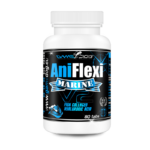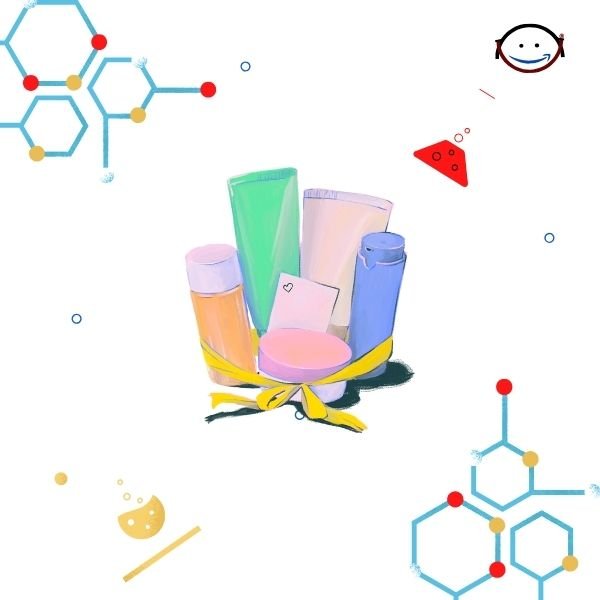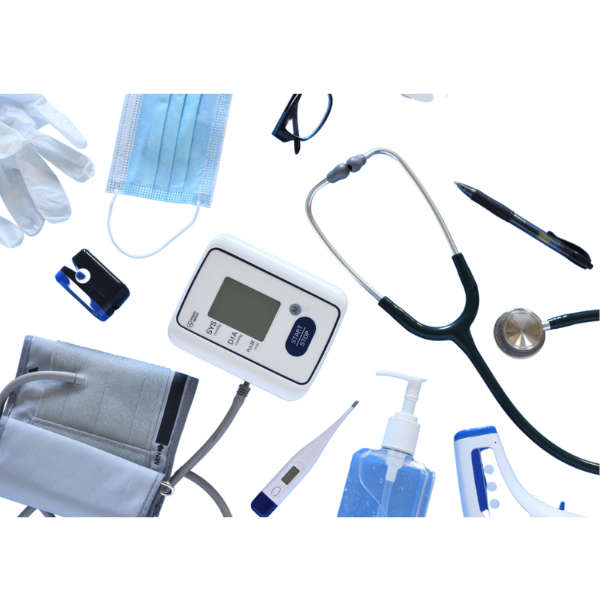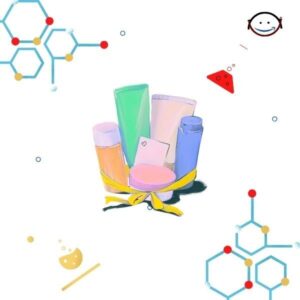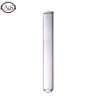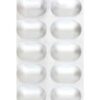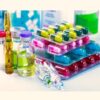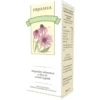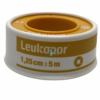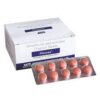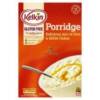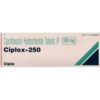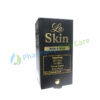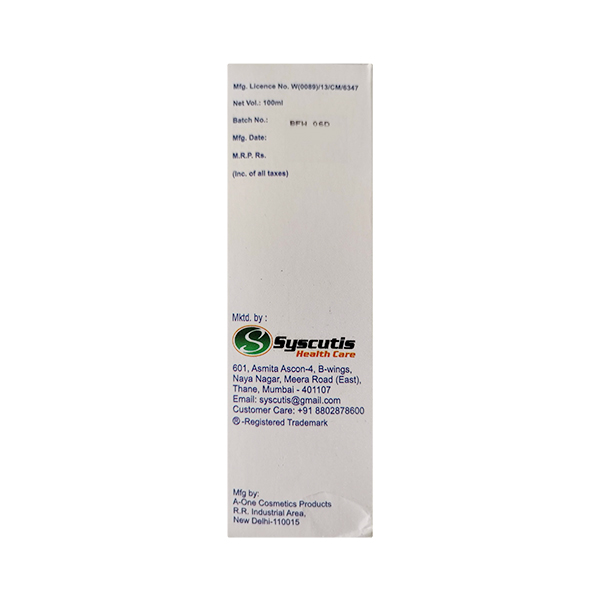-
Osmolite Liquid (1.5Kcal) - 500ml / 1000ml / 1500ml ₦33,200.00 QTY: 1
-
Test Tubes Short ₦100.00 QTY: 1
-
DONERVE B CAPSULE 10?S ₦3,898.25 QTY: 1
-
DESFLOVIN STRIP OF 10 TABLETS ₦5,960.75 QTY: 1
-
ROZARK CV 10MG STRIP OF 10 CAPSULES ₦3,155.75 QTY: 1
-
SYNERGICUM FUCUS 100ML ₦18,278.00 QTY: 1
-
Leukopor Paper Adhesive Tape - 1.25cm x 5m ₦12,400.00 QTY: 1
-
FLATUNA STRIP OF 10 TABLETS ₦2,165.75 QTY: 1
-
Kelkin Gluten Free Porridge- Gluten Free Food for Coeliacs ₦22,700.00 QTY: 1
-
CIPLOX 250MG TAB 10`S ₦530.75 QTY: 1
-
LA Skin AHA + BHA Serum 20ml ₦2,160.00 QTY: 1
-
BIOCUTIS Face Wash 100ml ₦44,200.00 QTY: 1
Customer matched zone "Lagos Delivery Options"
Sort by:
49–64 of 4627 Results
-
SaleAdlinameg 2.5 mg+850 mgThis is indicated as an adjunct to diet and exercise to improve glycemic control in adults with type 2 diabetes mellitus when treatment with both Linagliptin and Metformin Hydrochloride is appropriateTheropeutic ClassCombination Oral hypoglycemic preparationsPharmacologyLinagliptin is indicated to improve glycemic control in patients with type 2 diabetes mellitus. Linagliptin is an inhibitor of DPP-4 (dipeptidyl peptidase-4), an enzyme that degrades the incretin hormones GLP-1 (glucagon like peptide-1) and GIP (glucose dependent insulinotropic polypeptide). Thus, Linagliptin increases the concentrations of active incretin hormones, stimulating the release of insulin from pancreatic beta (?) cells in a glucose-dependent manner and decreasing the secretion of glucagon from pancreatic alpha (?) cells in the circulation.Metformin Hydrochloride is a biguanide type oral antihyperglycemic drug used in the management of type 2 diabetes. It lowers both basal and postprandial plasma glucose. Its mechanism of action is different from those of sulfonylureas and it does not produce hypoglycemia. Metformin Hydrochloride decreases hepatic glucose production, decreases intestinal absorption of glucose and improves insulin sensitivity by an increase in peripheral glucose uptake and utilization.Dosage & Administration of Adlinameg 2.5 mg+850 mgLinagliptin & Metformin immediate release tablet: The dosage of Linagliptin & Metformin should be individualized on the basis of both effectiveness and tolerability. Maximum recommended dose of 2.5 mg Linagliptin and 1000 mg Metformin Hydrochloride twice daily with meals. Dose escalation should be gradual to reduce the gastrointestinal (GI) side effects associated with Metformin Hydrochloride use.Recommended starting dose: In patients currently not treated with Metformin Hydrochloride, initiate treatment with 2.5 mg Linagliptin and 500 mg Metformin Hydrochloride twice daily. In patients already treated with Metformin Hydrochloride, start with 2.5 mg Linagliptin and the current dose of Metformin Hydrochloride twice daily. Patients already treated with Linagliptin and Metformin Hydrochloride, individual components may be switched to this combination containing the same doses of each component.Linagliptin & Metformin extend release tablet: The dosage of this combination should be individualized on the basis of both effectiveness and tolerability, while not exceeding the maximum recommended total daily dose of Linagliptin 5 mg and Metformin Hydrochloride 2000 mg. this combination should be given once daily with a meal.Recommended starting dose: In patients currently not treated with metformin, initiate this combination treatment with 5 mg Linagliptin/1000 mg Metformin Hydrochloride extended-release once daily with a meal.In patients already treated with Metformin, start this combination with 5 mg of Linagliptin total daily dose and a similar total daily dose of Metformin once daily with a meal.In patients already treated with Linagliptin & Metformin immediate release tablet, switch to extend release tablet containing 5 mg of Linagliptin total daily dose and a similar total daily dose of Metformin once daily with a meal.5 mg Linagliptin & 1000 mg Metformin Hydrochloride extended-release tablet should be taken as a single tablet once daily. Patients using 2.5 mg Linagliptin & 1000 mg Metformin extended release tablets should take two tablets together once daily.Dosage of Adlinameg 2.5 mg+850 mgLinagliptin & Metformin immediate release tablet: The dosage of Linagliptin & Metformin should be individualized on the basis of both effectiveness and tolerability. Maximum recommended dose of 2.5 mg Linagliptin and 1000 mg Metformin Hydrochloride twice daily with meals. Dose escalation should be gradual to reduce the gastrointestinal (GI) side effects associated with Metformin Hydrochloride use.Recommended starting dose: In patients currently not treated with Metformin Hydrochloride, initiate treatment with 2.5 mg Linagliptin and 500 mg Metformin Hydrochloride twice daily. In patients already treated with Metformin Hydrochloride, start with 2.5 mg Linagliptin and the current dose of Metformin Hydrochloride twice daily. Patients already treated with Linagliptin and Metformin Hydrochloride, individual components may be switched to this combination containing the same doses of each component.Linagliptin & Metformin extend release tablet: The dosage of this combination should be individualized on the basis of both effectiveness and tolerability, while not exceeding the maximum recommended total daily dose of Linagliptin 5 mg and Metformin Hydrochloride 2000 mg. this combination should be given once daily with a meal.Recommended starting dose: In patients currently not treated with metformin, initiate this combination treatment with 5 mg Linagliptin/1000 mg Metformin Hydrochloride extended-release once daily with a meal.In patients already treated with Metformin, start this combination with 5 mg of Linagliptin total daily dose and a similar total daily dose of Metformin once daily with a meal.In patients already treated with Linagliptin & Metformin immediate release tablet, switch to extend release tablet containing 5 mg of Linagliptin total daily dose and a similar total daily dose of Metformin once daily with a meal.5 mg Linagliptin & 1000 mg Metformin Hydrochloride extended-release tablet should be taken as a single tablet once daily. Patients using 2.5 mg Linagliptin & 1000 mg Metformin extended release tablets should take two tablets together once daily.Interaction of Adlinameg 2.5 mg+850 mgCationic drugs (amiloride, digoxin, morphine, ranitidine, trimethoprim etc.): May reduce metformin elimination. P-glycoprotien/CYP3A4 inducer (i.e. rifampin): The efficacy of this medicine may be reduced when administered in combination.ContraindicationsAlthough Linagliptin undergoes minimal renal excretion, Metformin Hydrochloride is known to be substantially excreted by the kidney. The risk of Metformin Hydrochloride accumulation and lactic acidosis increases with the degree of renal impairment. Therefore, this combination is contraindicated in patients with renal impairment. It is also contraindicated in acute or chronic metabolic acidosis (diabetic ketoacidosis) and in hypersensitivity to Linagliptin or Metformin Hydrochloride.Side Effects of Adlinameg 2.5 mg+850 mgMost common side effects are nasopharyngitis and diarrhea. Hypoglycemia is more common in patients treated with this combination and sulfonylureas.Pregnancy & LactationThere are no adequate and well-controlled studies in pregnant women with this combination or its individual component; so it should be used during pregnancy only if clearly needed. Caution should also be excercised when it is administered to a lactating mother.Precautions & WarningsIn a patient with lactic acidosis who is taking Metformin, the drug should be discontinued immediately and supportive therapy promptly instituted. There have been postmarketing reports of acute pancreatitis. If pancreatitis is suspected, promptly discontinue Linagliptin & Metformin. Temporarily discontinue Linagliptin & Metformin?in patients undergoing radiologic studies with intravascular administration of iodinated contrast materials or any surgical procedures necessitating restricted intake of food and fluids. Metformin may lower Vitamin B12 levels; so hematologic parameters shoud be monitored annually.Overdose Effects of Adlinameg 2.5 mg+850 mgIn the event of an overdose with this combination the usual supportive measures (i.e. remove unabsorbed material from the gastrointestinal tract, perform clinical monitoring, and institute supportive treatment) should be employed. Removal of Linagliptin by hemodialysis or peritoneal dialysis is unlikely but Metformin Hydrochloride is dialyzable. During controlled clinical trials in healthy subjects, with single doses of up to 600 mg of Linagliptin (equivalent to 120 times the recommended daily dose), there were no dose-related clinical adverse drug reactions. Overdose of Metformin Hydrochloride has occurred in case of ingestion of amounts greater than 50 grams. Hypoglycemia was reported in approximately 10% of cases, but no causal association with Metformin Hydrochloride has been established. Lactic acidosis has been reported in approximately 32% of Metformin Hydrochloride overdose cases.Storage ConditionsKeep in a cool & dry place (below 30?C), protected from light & moisture. Keep out of the reach of children.Drug ClassesCombination Oral hypoglycemic preparationsMode Of ActionLinagliptin is indicated to improve glycemic control in patients with type 2 diabetes mellitus. Linagliptin is an inhibitor of DPP-4 (dipeptidyl peptidase-4), an enzyme that degrades the incretin hormones GLP-1 (glucagon like peptide-1) and GIP (glucose dependent insulinotropic polypeptide). Thus, Linagliptin increases the concentrations of active incretin hormones, stimulating the release of insulin from pancreatic beta (?) cells in a glucose-dependent manner and decreasing the secretion of glucagon from pancreatic alpha (?) cells in the circulation.Metformin Hydrochloride is a biguanide type oral antihyperglycemic drug used in the management of type 2 diabetes. It lowers both basal and postprandial plasma glucose. Its mechanism of action is different from those of sulfonylureas and it does not produce hypoglycemia. Metformin Hydrochloride decreases hepatic glucose production, decreases intestinal absorption of glucose and improves insulin sensitivity by an increase in peripheral glucose uptake and utilization.PregnancyThere are no adequate and well-controlled studies in pregnant women with this combination or its individual component; so it should be used during pregnancy only if clearly needed. Caution should also be excercised when it is administered to a lactating mother.Sku: 1736100541-2417
Adlinameg2.5 mg+850 mg
₦7,700.00Original price was: ₦7,700.00.₦6,930.00Current price is: ₦6,930.00.₦7,700.00Original price was: ₦7,700.00.₦6,930.00Current price is: ₦6,930.00. Add to basket Quick View -
SaleAdora 500 mgIt is indicated for the treatment of upper respiratory tract infections (pharyngitis and tonsillitis) caused by Streptococcus pyogenes (group-A beta-hemolytic Streptococci) and Streptococcus pneumoniae; urinary tract infections caused by E. coli, Proteus mirabilis, and Klebsiella species and skin & ... Read moreIt is indicated for the treatment of upper respiratory tract infections (pharyngitis and tonsillitis) caused by Streptococcus pyogenes (group-A beta-hemolytic Streptococci) and Streptococcus pneumoniae; urinary tract infections caused by E. coli, Proteus mirabilis, and Klebsiella species and skin & soft tissue infections caused by Staphylococci (including penicillinase producing bacteria) and Streptococci.Theropeutic ClassFirst generation CephalosporinsPharmacologyCefadroxil inhibits bacterial cell wall synthesis by binding to 1 or more of the penicillin-binding proteins (PBPs) which in turn inhibit the final transpeptidation step of peptidoglycan synthesis in bacterial cell walls, thus inhibiting cell wall biosynthesis and arresting cell wall assembly resulting in bacterial cell death.Dosage & Administration of Adora 500 mgAdult: Pharyngitis and Tonsillitis: 1 g per day in one or two divided doses. Urinary Tract Infections: 1 or 2 g per day in one or two divided doses. Skin and Skin Structure Infections: 1 g per day in one or two divided doses. Children: 30 mg/kg daily in divided doses every 12 hours. It may be taken with meals or on empty stomach. Administration with food may be helpful in diminishing potential gastrointestinal complaints.Dosage of Adora 500 mgAdult: Pharyngitis and Tonsillitis: 1 g per day in one or two divided doses. Urinary Tract Infections: 1 or 2 g per day in one or two divided doses. Skin and Skin Structure Infections: 1 g per day in one or two divided doses. Children: 30 mg/kg daily in divided doses every 12 hours. It may be taken with meals or on empty stomach. Administration with food may be helpful in diminishing potential gastrointestinal complaints.Interaction of Adora 500 mgThere is no significant drug interaction with other drugs.ContraindicationsCefadroxil is contraindicated in patients with a history of hypersensitivity to Cefadroxil or any of the ingredients of it.Side Effects of Adora 500 mgGenerally Cefadroxil is well tolerated. However, the most commonly reported side effects are gastrointestinal disturbances and hypersensitivity phenomena.Pregnancy & LactationUS FDA pregnancy category of Cefadroxil is B. There are, however, no adequate and well-controlled studies in pregnant women. Because animal reproduction studies are not always predictive of human response, this drug should be used during pregnancy only if clearly needed. Cefadroxil have been shown to be excreted in human milk. So, caution should be exercised when Cefadroxil is administered during lactation.Precautions & WarningsUse of this antibiotic may cause pseudomembranous colitis; so caution should be taken during diagnosis in patients who develop diarrhea in association with Cefadroxil therapy.Storage ConditionsKeep in a dry place away from light and heat. Keep out of the reach of children.Drug ClassesFirst generation CephalosporinsMode Of ActionCefadroxil inhibits bacterial cell wall synthesis by binding to 1 or more of the penicillin-binding proteins (PBPs) which in turn inhibit the final transpeptidation step of peptidoglycan synthesis in bacterial cell walls, thus inhibiting cell wall biosynthesis and arresting cell wall assembly resulting in bacterial cell death.PregnancyUS FDA pregnancy category of Cefadroxil is B. There are, however, no adequate and well-controlled studies in pregnant women. Because animal reproduction studies are not always predictive of human response, this drug should be used during pregnancy only if clearly needed. Cefadroxil have been shown to be excreted in human milk. So, caution should be exercised when Cefadroxil is administered during lactation.Sku: 1736103612-3316
Adora500 mg
₦990.00Original price was: ₦990.00.₦891.00Current price is: ₦891.00. -
SaleAdorbis 2.5 mgBisoprolol is indicated in- Hypertension Angina Moderate to severe heart failure Bisoprolol is not recommended for the emergency treatment of hypertensive crises.Dosage of Adorbis 2.5 mgAdult: In the treatment of mild to moderate hypertension, Bisoprolol fumarate must be individualized to the needs of the patient. The usual starting dose is 5 mg once daily either added to a diuretic or alone. If the response to 5 mg is inadequate, the dose may be increased to 10 mg and then, if necessary, to 20 mg once daily. An appropriate interval for dose titration is 2 weeks. Increasing the dose beyond 20 mg once daily produces only a small incremental benefit.Children: Safety and effectiveness in children have not been established.Patients With Renal or Hepatic Impairment: In patients with hepatic impairment (hepatitis or cirrhosis) or renal dysfunction (creatinine clearance less than 40 mL/min) as in other patients, the initial daily dose should be 5 mg. Because of the possibility of accumulation, caution must be used in dose titration. Since limited data suggest that bisoprolol fumarate is not dialysable, drug replacement is not necessary in patients undergoing dialysis.Geriatrics: In the elderly, it is not usually necessary to adjust the dose, unless there is also significant renal or hepatic dysfunctionInteraction of Adorbis 2.5 mgOther ?-blocking Agents: Bisoprolol fumarate should not be combined with other ?-blocking agents.Catecholamine-Depleting Drugs: Patients receiving catecholamine-depleting drugs, such as reserpine or guanethidine, should be monitored closely because the added ?-adrenergic blocking action of bisoprolol fumarate may produce excessive reduction of sympathetic activity.Centrally Active Antihypertensive Agents: ?-blockers may exacerbate the rebound hypertension which can follow the withdrawal of clonidine. If the two drugs are coadministered, the ?-blocker should be withdrawn several days before discontinuing clonidine. If replacing clonidine by ?-blocker therapy, the introduction of ?-blockers should be delayed for several days after clonidine administration has stopped (see also prescribing information for clonidine).Antiarrhythmic Agents: Bisoprolol fumarate should be used with care when myocardial depressants or inhibitors of A-V conduction, such as certain calcium antagonists (particularly of the phenyl alkylamine (verapamil) and benzothiazepine (diltiazem) classes), or antiarrhythmic agents, such as disopyramide, are used concurrently.Calcium Channel Blockers: Combined use of ?-blockers and calcium channel blockers with negative inotropic effects can lead to prolongation of S-A and A-V conduction, particularly in patients with impaired ventricular function or conduction abnormalities. This may result in severe hypotension, bradycardia and cardiac failure.ContraindicationsIn patients with cardiogenic shock, overt heart failure, second or third degree A-V block, right ventricular failure secondary to pulmonary hypertension and sinus bradycardia.Side Effects of Adorbis 2.5 mgBisoprolol, like any medication, may have some side effects. It is important that you keep your doctor informed of all side effects especially if you experience one of the following for several days. The most common side effects, whether or not caused by Bisoprolol, are: headache, fatigue, urinary tract infection, rhinitis or sinusitis (inflammation in the nose), diarrhea, dizziness, peripheral edema (swelling of the ankles), joint pain, cough, insomnia (trouble sleeping), nausea (feeling like vomiting), and sore throat. You must seek medical attention immediately if you experience an allergic reaction with symptoms of rash, itching, swelling, dizziness or trouble breathing. Medicines affect different people in different ways. Just because side effects have occurred in other patients does not mean you will get them. Discuss how you feel on Bisoprolol with your doctor or pharmacist. Do not stop or restart Bisoprolol on your own.Precautions & WarningsMonitoring of renal, hepatic and hematopoietic function should be performed at regular intervals during long-term treatment with bisoprolol.Storage ConditionsKeep in a dry place away from light and heat. Keep out of the reach of children.Drug ClassesAnti adrenergic agent (Beta blockers), Beta-adrenoceptor blocking drugs, Beta-blockersMode Of ActionAdorbis 2.5 mg is the most selective ?1 blocker. It displays highest level of affinity for the ?1 receptor than any other beta-blocker available up to now. Selectively blocks ?1 adrenergic receptor in the heart and vascular smooth muscle and reduces heart rate and cardiac output resulting in decrease of arterial hypertension. Lipid metabolism can be adversely affected by ?-blockers, in patients with non-?1 selective ?1-blocker, but Bisoprolol does not cause any change in the cholesterol fraction including the cardioprotective HDL-cholesterol, in long-term therapy.PregnancyPregnancy: Bisoprolol fumarate was not teratogenic in rats at doses up to 150 mg/kg/day, which is 375 times the maximum recommended human daily dose. Bisoprolol fumarate was fetotoxic (increased late resorptions) at 50 mg/kg/day and maternotoxic (decreased food intake and body-weight gain) at 150 mg/kg/day. Bisoprolol fumarate was not teratogenic in rabbits at doses up to 12.5 mg/kg/day, which is 31 times the maximum recommended human daily dose, but was embryolethal (increased early resorptions) at 12.5 mg/kg/day. There are no studies in pregnant women. Bisoprolol fumarate should be used during pregnancy only if the potential benefit justifies the potential risk to the fetus.Lactation: Small amounts of bisoprolol fumarate (<2% of the dose) have been detected in the milk of lactating rats. It is not known whether this drug is excreted in human milk. If use of bisoprolol fumarate is considered essential, then mothers should stop nursing.Sku: 1736096366-1193
Adorbis2.5 mg
₦3,300.00Original price was: ₦3,300.00.₦2,970.00Current price is: ₦2,970.00.₦3,300.00Original price was: ₦3,300.00.₦2,970.00Current price is: ₦2,970.00. Add to basket Quick View -
SaleAdovas 100 ml This Adovas liquefies phlegm. It soothes irritation of the throat. Helps to relieve hoarseness. It is a remedy for all types of cough such as dry irritable cough, allergic & smokers cough. Composition Each teaspoon full (5 ml) of syrup contains extracts of- Adhatoda vasica 0.68 gm Piper longum 0.14 gm Glycyrrhiza glabra 6.78 mg Trikatu (Piper nigrum, Zingiber officinale) 20.34 mg Terminalia chebula 73.24 mg Vitis venifera 0.14 gm Acorus calamus 6.78 mg Saussurea lappa 6.78 mg Syzygium aromaticum 6.78 mg Trizatak (Cinnamomum zeylanicum, Elettaria cardamomum, Cinnamomum tamala) 20.34 mg Pistacia integerrima 6.78 mg Myrica nagi 6.78 mg Woodfordia fruticosa 1.14 mg. Dosage of Adovas 100 ml Children under 12 years: 1-2 teaspoonful (5-10 ml) 2-3 times a day. 'Adult: 3 teaspoonful (15 ml) 2-3 times a day.Some warm water may be added for better results. Interaction of Adovas 100 ml No report is available. Contraindications No report is available on contraindication. It may be happen in patients who are hypersensitive to any of its ingredients. Side Effects of Adovas 100 ml This syrup is proven as safe. It is well tolerated. In high dose diarrhea, vomiting may occur. Storage Conditions Keep out of reach of children. Keep away from direct sunlight. Store in a cool and dry place. Drug Classes Herbal and Nutraceuticals Mode Of Action Adhatoda vasica (Basok): Relieves cough & bronchial spasm. It liquefies mucous. Piper longum (Pipul): Relieves cold allergy & asthma. Glycyrrhiza glabra (Jashthi Modhu) : Relieves irritation of throat. Enhances the immune system. It is anti-inflammatory, demulcent & expectorant. Piper nigrum (Marich): It is fungistatic, bacteriostatic & anti-inflammatory. Zingiber officinale (Shunthi): It is antihistaminic. Very much effective in common cold. Terminalia chebula (Haritaki): It removes toxin from the body. It has beneficial effect on all tissues. Vitis venifera (Kismiss): Relieves cough and general tonic. Acorus calamus (Bacha): Helps in bronchial catarrh & intermittent fever. Saussurea lappa (Kur): It is antiseptic & disinfectant. It is very useful in bronchial asthma. Syzygium aromaticum (Labango): Useful in cough & other respiratory diseases. It prevents bad breath. Cinnamomum zeylanicum (Darchini): It is antibacterial & antifungal and relieves cough due to its soothing action. Elettaria cardamomum (Elachi): It is aromatic in nature and shows antimicrobial activity. Cinnamomum tamala (Tejpata): It is a tonic & appetizer agent. Pistacia integerrima (Kakra sringi): It helps in asthma. Myrica nagi ( Kotfal): It is a remedy for sore throat. Woodfordia fruticosa (Daiful): It is good anti-infective agent and is useful in relieving cough due to its soothing action. Tulsi extract & other ingredients: Tulsi extract & some other ingredients are added to DEVAS syrup for relieving acute cough. Pregnancy The safety of this syrup in pregnancy has not been studied. Therefore, it should be used with caution during pregnancy.Sku: 1736107610-4500
Adovas100 ml
₦3,850.00Original price was: ₦3,850.00.₦3,465.00Current price is: ₦3,465.00.₦3,850.00Original price was: ₦3,850.00.₦3,465.00Current price is: ₦3,465.00. Add to basket Quick View -
SaleAdovas 200 ml This Adovas liquefies phlegm. It soothes irritation of the throat. Helps to relieve hoarseness. It is a remedy for all types of cough such as dry irritable cough, allergic & smokers cough. Composition Each teaspoon full (5 ml) of syrup contains extracts of- Adhatoda vasica 0.68 gm Piper longum 0.14 gm Glycyrrhiza glabra 6.78 mg Trikatu (Piper nigrum, Zingiber officinale) 20.34 mg Terminalia chebula 73.24 mg Vitis venifera 0.14 gm Acorus calamus 6.78 mg Saussurea lappa 6.78 mg Syzygium aromaticum 6.78 mg Trizatak (Cinnamomum zeylanicum, Elettaria cardamomum, Cinnamomum tamala) 20.34 mg Pistacia integerrima 6.78 mg Myrica nagi 6.78 mg Woodfordia fruticosa 1.14 mg. Dosage of Adovas 200 ml Children under 12 years: 1-2 teaspoonful (5-10 ml) 2-3 times a day. 'Adult: 3 teaspoonful (15 ml) 2-3 times a day.Some warm water may be added for better results. Interaction of Adovas 200 ml No report is available. Contraindications No report is available on contraindication. It may be happen in patients who are hypersensitive to any of its ingredients. Side Effects of Adovas 200 ml This syrup is proven as safe. It is well tolerated. In high dose diarrhea, vomiting may occur. Storage Conditions Keep out of reach of children. Keep away from direct sunlight. Store in a cool and dry place. Drug Classes Herbal and Nutraceuticals Mode Of Action Adhatoda vasica (Basok): Relieves cough & bronchial spasm. It liquefies mucous. Piper longum (Pipul): Relieves cold allergy & asthma. Glycyrrhiza glabra (Jashthi Modhu) : Relieves irritation of throat. Enhances the immune system. It is anti-inflammatory, demulcent & expectorant. Piper nigrum (Marich): It is fungistatic, bacteriostatic & anti-inflammatory. Zingiber officinale (Shunthi): It is antihistaminic. Very much effective in common cold. Terminalia chebula (Haritaki): It removes toxin from the body. It has beneficial effect on all tissues. Vitis venifera (Kismiss): Relieves cough and general tonic. Acorus calamus (Bacha): Helps in bronchial catarrh & intermittent fever. Saussurea lappa (Kur): It is antiseptic & disinfectant. It is very useful in bronchial asthma. Syzygium aromaticum (Labango): Useful in cough & other respiratory diseases. It prevents bad breath. Cinnamomum zeylanicum (Darchini): It is antibacterial & antifungal and relieves cough due to its soothing action. Elettaria cardamomum (Elachi): It is aromatic in nature and shows antimicrobial activity. Cinnamomum tamala (Tejpata): It is a tonic & appetizer agent. Pistacia integerrima (Kakra sringi): It helps in asthma. Myrica nagi ( Kotfal): It is a remedy for sore throat. Woodfordia fruticosa (Daiful): It is good anti-infective agent and is useful in relieving cough due to its soothing action. Tulsi extract & other ingredients: Tulsi extract & some other ingredients are added to DEVAS syrup for relieving acute cough. Pregnancy The safety of this syrup in pregnancy has not been studied. Therefore, it should be used with caution during pregnancy.Sku: 1736107264-4396
Adovas200 ml
₦6,050.00Original price was: ₦6,050.00.₦5,445.00Current price is: ₦5,445.00.₦6,050.00Original price was: ₦6,050.00.₦5,445.00Current price is: ₦5,445.00. Add to basket Quick View -
SaleAdryl 100 mlDiphenhydramine is indicated for the treatment of followings: Seasonal, perennial, vasomotor rhinitis Urticaria, angioneurotic oedema, anaphylaxis Pruiritic conditions Premedication for emesis and motion sickness Miscellaneous like meniere's disease and parkinsonism Theropeutic ClassSedating Anti-histaminePharmacologyDiphenhydramine is an antihistamine with anticholinergic and sedative effects. It competes with histamine for H1-receptor sites on effector cells in the GI tract, blood vessels and respiratory tract.Dosage & Administration of Adryl 100 mlAdult- Most allergic conditions: 25-50 mg three times a day with a further 50 mg at night. Children- 1 to 5 years of age: 5 mg i.e., 2.5 ml of elixir 4 times a day More than 6 years of age: 10 mg i.e. 5 ml of elixir 4 times a day Dosage of Adryl 100 mlAdult- Most allergic conditions: 25-50 mg three times a day with a further 50 mg at night. Children- 1 to 5 years of age: 5 mg i.e., 2.5 ml of elixir 4 times a day More than 6 years of age: 10 mg i.e. 5 ml of elixir 4 times a day Interaction of Adryl 100 mlDiphenhydramine administration significantly reduces the absorption of the antituberculous agent para-aminosalicyclic acid (PAS) from the gastrointestinal tract. CNS depressants may potentiate the sedative action of Diphenhydramine. Anticholinergic drugs may potentiate Diphenhydramine?s anticholinergic side effects.ContraindicationsKnown hypersensitivity to Adryl 100 ml, Ammonium chloride is contra-indicated in presence of impaired hepatic or renal function.Side Effects of Adryl 100 mlSide effect includes sedation, dizziness, tinnitus, fatigue, ataxia, blurred vision, diplopia, euphoria, and epigastric discomfort.Pregnancy & LactationCategory B: There are no adequate and well controlled studies in pregnant women using Adryl 100 ml. Therefore, Adryl 100 ml should be used in pregnancy only if clearly needed. Diphenhydramine hydrochloride has been reported to be excreted in breast milk and thus, use of Adryl 100 ml in lactating mother is not recommended.Precautions & WarningsCaution should be exercised with patients in whom drowsiness is undesirable e.g., drivers, machine operators. Concomitant consumption of alcohol or central nervous system (CNS) depressants will potentiate drowsiness.Overdose Effects of Adryl 100 mlSymptoms: Impaired consciousness? psychosis, seizures, antimuscarinic symptoms (e.g. mydriasis, tachycardia, tachyarrhythmias), resp failure, rhabdomyolysis; acute delirium with visual and auditory hallucination (topical). Management: Supportive and symptomatic treatment. Convulsions and marked CNS stimulation may be treated with IV diazepam.Storage ConditionsStore between 15-30? C. Protect from moisture.Drug ClassesSedating Anti-histamineMode Of ActionDiphenhydramine is an antihistamine with anticholinergic and sedative effects. It competes with histamine for H1-receptor sites on effector cells in the GI tract, blood vessels and respiratory tract.PregnancyCategory B: There are no adequate and well controlled studies in pregnant women using Adryl 100 ml. Therefore, Adryl 100 ml should be used in pregnancy only if clearly needed. Diphenhydramine hydrochloride has been reported to be excreted in breast milk and thus, use of Adryl 100 ml in lactating mother is not recommended.Sku: 1736103855-3386
Adryl100 ml
₦2,475.00Original price was: ₦2,475.00.₦2,227.50Current price is: ₦2,227.50.₦2,475.00Original price was: ₦2,475.00.₦2,227.50Current price is: ₦2,227.50. Add to basket Quick View -
SaleSku: 1736098282-1749
Affrox30 mg
₦49,500.00Original price was: ₦49,500.00.₦45,540.00Current price is: ₦45,540.00.₦49,500.00Original price was: ₦49,500.00.₦45,540.00Current price is: ₦45,540.00. Add to basket Quick View -
SaleAfix 200 mgCefixime is an orally active cephalosporin antibiotic which has marked in-vitro bactericidal activity against a wide variety of Gram-positive and Gram-negative organism. Afix 200 mg indicated for the treatment of the following acute infections when caused by susceptible microorganisms.Upper Respiratory Tract Infections (URTI): e.g. otitis media; and other URTI where the causative organism is known or suspected to be resistant to other commonly used antibiotics, or where treatment failure may carry significant risk. Lower Respiratory Tract Infections-e.g. bronchitis.Urinary Tract Infections:?e.g. cystitis, cystourethritis, pyelonephritis. Clinical efficacy has been demonstrated in infections caused by commonly occurring pathogens including Streptococcus pneumonia, Streptococcus pyogenes, Escherichia coli, Proteus mirabilis, Klebsiella species, Haemophilus influenzae (beta-lactamase positive and negative), Moraxella catarrhalis (beta-lactamase positive and negative) and Enterobacter species. Cefixime is highly stable in the presence of beta-lactamase enzymes.Theropeutic ClassThird generation CephalosporinsPharmacologyCefixime is a third generation semisynthetic cephalosporin antibiotic for oral administration. It is bactericidal against a broad spectrum of gram positive and gram negative bacteria at easily achievable plasma concentrations. It kills bacteria by interfering in the synthesis of bacterial cell wall. It is highly stable in the presence of Beta-lactamase enzyme. As a result, many organisms resistant to penicillins and some cephalsporins due to the presence of beta-lactamases, may be susceptible to Cefixime. Absorption of it is about 40% to 50% whether administered with or without food.Dosage & Administration of Afix 200 mgThe usual course of treatment is 7 days. This may be continued for up to 14 days depending on the severity of the infection.Adult and children over 12 years: The recommended adult dose is 200-400 mg (1 to 2 capsules) daily, given either as a single dose or in two divided doses. For the treatment of uncomplicated cervical/urethral gonococcal infections, a single oral dose of Cefixime 400 mg is recommended.Children (6 month or older): Usually 8 mg/kg/day given as a single dose or in two divided doses or may be given as following ?-1 year: 75 mg daily. 1-4 years: 100 mg daily. 5-10 years: 200 mg daily. 11-12 years: 300 mg daily In typhoid fever, dosage should be 10 mg/kg/day for 14 days. Children (under 6 month): The safety and efficacy of Cefixime has not been established in children aged less than 6 months.Dosage of Afix 200 mgAbsorption of Cefixime is not significantly modified by the presence of food. The usual course of treatment is 7 days. This may be continued for up to 14 days if required. Adults and children over 10 years: The recommended adult dosage is 200-400 mg daily according to the severity of the infection, given either as a single dose or in two divided doses. Elderly: Elderly patients may be given the same dose as recommended for adults. Renal function should be assessed and dosage should be adjusted in severe renal impairment. Children: The recommended dosage for children is 8 mg/kg/day administered as a single dose or in two divided doses. As a general guide for prescribing in children the following daily doses in terms of volume of suspension are suggested: 6 months up to 1 year: 3.75 ml daily Children 1-4 years: 5 ml daily Children 5-10 years: 10 ml daily In typhoid: the recommended children dose is 5 mg/kg body weight twice daily for 10-14 days. Children weighing more than 50 kg or older than 10 years: Should be treated with the recommended adult dose 200-400 mg daily depending on the severity of infection. Children aged less than 6 months: The safety and efficacy of Cefixime has not been established in children aged less than 6 months.Dosage in Renal Impairment: Cefixime may be administered in the presence of impaired renal function. Normal dose and schedule may be given in patients with creatinine clearances of 20 ml/min or greater. In patients whose creatinine clearance is less than 20 ml/min, it is recommended that a dose of 200 mg once daily should not be exceeded. The dose and regimen for patients who are maintained on chronic ambulatory peritoneal dialysis or haemodialysis should follow the same recommendation as that for patients with creatinine clearances of less than 20 ml/min.Interaction of Afix 200 mgIn common with other cephalosporins, increases in prothrombin times have been noted in a few patients. Care should therefore be taken in patients receiving anticoagulant therapy.ContraindicationsPatients with known hypersensitivity to cephalosporin antibiotics.Side Effects of Afix 200 mgCefixime is generally well tolerated. The majority of adverse reactions observed in clinical trials were mild and self limiting in nature. Gastrointestinal disturbances: The most frequent side-effects seen with Cefixime are diarrhoea and stool changes; diarrhoea has been more commonly associated with higher doses. Other gastrointestinal side-effects seen less frequently are nausea, abdominal pain, dyspepsia, vomiting and flatulence. Pseudomembraneous colitis has been reported. Central nervous system: headache and dizziness. Hypersensitivity reactions: allergies in the form of rash, pruritis, urticaria, drug fever and arthralgia have been observed. These reactions usually subsided upon discontinuation of therapy. Hematological and clinical chemistry: thrombocytopenia, leukopenia and eosinophilia have been reported. These reactions were infrequent and reversible. Mild transient change in liver and renal function tests have been observed. Miscellaneous: other possible reactions include genital pruritis and vaginitis.Pregnancy & LactationThere are, however, no adequate and well-controlled studies in pregnant women. Because animal reproduction studies are not always predictive of human response, this drug should be used during pregnancy only if clearly needed. It is not known that Cefixime is excreted in human milk. So, caution should be exercised when Cefixime is administered to a nursing woman.Precautions & WarningsCefixime should be given with caution to patients who have shown hypersensitivity to other drugs. Cephalosporin should be given with caution to penicillin-sensitive patients, as there is some evidence of partial cross-allergenicity between the penicillins and the cephalosporins. Patients have had severe reactions (including anaphylaxis) to both classes of drugs. If an allergic effect occurs with Cefixime, the drug should be discontinued and the patient treated with appropriate agents if necessary. Cefixime should be administered with caution in patients with markedly impaired renal function. Treatment with broad spectrum antibiotics alters the normal flora of the colon and may permit overgrowth of clostridia. Studies indicate that a toxin produced by Clostridium difficile is a primary cause of antibiotic-associated diarrhoea. Use in pregnancy and lactation: There are no adequate and well-controlled studies in pregnant women. Cefixime should therefore not be used in pregnancy or in nursing mothers unless considered essential by the physician.Overdose Effects of Afix 200 mgGastric Lavage may be indicated; otherwise, no specific antidote exists. Cefixime is not removed in significant quantities from the circulation by hemodialysis or peritoneal dialysis. Adverse reactions in small numbers of healthy adult volunteers receiving single doses up to 2 g of Cefixime did not differ from the profile seen in patients treated at the recommended doses.Storage ConditionsKeep below 30?C temperature, protected from light & moisture. Keep out of the reach of children.Drug ClassesThird generation CephalosporinsMode Of ActionCefixime is a third generation semisynthetic cephalosporin antibiotic for oral administration. It is bactericidal against a broad spectrum of gram positive and gram negative bacteria at easily achievable plasma concentrations. It kills bacteria by interfering in the synthesis of bacterial cell wall. It is highly stable in the presence of Beta-lactamase enzyme. As a result, many organisms resistant to penicillins and some cephalsporins due to the presence of beta-lactamases, may be susceptible to Cefixime. Absorption of it is about 40% to 50% whether administered with or without food.PregnancyThere are, however, no adequate and well-controlled studies in pregnant women. Because animal reproduction studies are not always predictive of human response, this drug should be used during pregnancy only if clearly needed. It is not known that Cefixime is excreted in human milk. So, caution should be exercised when Cefixime is administered to a nursing woman.Sku: 1736106149-4061
Afix200 mg
₦2,475.00Original price was: ₦2,475.00.₦2,252.25Current price is: ₦2,252.25.₦2,475.00Original price was: ₦2,475.00.₦2,252.25Current price is: ₦2,252.25. Add to basket Quick View -
SaleAfun 1%The confirmed indication for Afun 1%?include: All dermatomycoses due to dermatophytes (e.g. Trichophyton species). All dermatomycoses due to yeasts (Candida species). Dermatomycoses due to moulds and other fungi. Skin diseases showing superinfections with these fungi. To the dermatomycoses listed under 1-4 belong for example, interdigital myocoses (e.g. athlete?s foot), paronychias (associated with nail mycoses), myocoses in skin folds, Candida vulvitis, Candida balanitis, Pityriasis versicolor, erythrasma.Theropeutic ClassDrugs for subcutaneous and mycoses, Topical Antifungal preparationsPharmacologyAfun 1% is a broad spectrum antifungal. It also exhibits activity against Trichomonus, Staphylococci, Streptococci and Bacteroides. Afun 1% kills fungi and yeasts by interfering with their cell membranes. It works by stopping the production of ergosterol, which is an essential component of fungal cell membranes resulting in increased membrane permeability and leakage of essential constituents of the fungal cells.Dosage & Administration of Afun 1%Wash skin with soap and water and dry thoroughly. Apply a thin layer of the cream or solution 2-3 times daily and gently massage over affected area as directed by the doctor. For Athlete?s foot, pay special attention to the spaces between the toes. Best results in Athlete's foot and ringworm are usually obtained with 4 weeks use of this product. The cream should be applied two or three times daily for one month or for at least two weeks after the disappearance of all signs of infection. If satisfactory results have not occurred within these times consultation with doctor is essential. For best results, follow directions and continue treatment for length of time indicated. The duration of treatment varies; it depends among other factors on the extent and localization of the disease.Recommended duration of treatment : Dermatomycoses: 3-4 weeks Candida vulvitis and candida balanitis: 1-2 weeks Erythrasma and pityriasis versicolor (approx.): 3 weeks In fungal infection of the feet, to prevent relapses:?Treatment should be continued for about 2 weeks beyond the disappearance of all signs of disease. Afun 1% cream is odourless, can be washed off and does not stain.ContraindicationsHypersensitivity to Afun 1%.Side Effects of Afun 1%Afun 1% is generally well tolerated after local application but the few side effects have been reported infrequently like erythema, stinging, blistering, peeling, oedema, pruritus, urticaria and general irritation.Pregnancy & LactationPregnancy?Category B. Afun 1% is recommended during pregnancy only after first consulting a doctor.Lactation: Because systemic absorption of Afun 1% following topical application is marginal, there should be no risk for the infant during lactation.Precautions & WarningsIf local intolerance develops, consider withdrawal of the medicine and institution of appropriate therapy. Afun 1% solution is not intended for ophthalmic use.Overdose Effects of Afun 1%Supportive measures should be taken incase of accidental oral ingestion.Storage ConditionsStore at a cool and dry place. Protect from light. Do not freeze.Duration Of TreatmentFor the treatment to become a complete success, reliable and sufficiently long application of Afun 1% cream is important. The duration of treatment varies; it depends among other factors on the extent and localisation of the disease.Sku: 1736106832-4266
Afun1%
₦1,931.05Original price was: ₦1,931.05.₦1,738.00Current price is: ₦1,738.00.₦1,931.05Original price was: ₦1,931.05.₦1,738.00Current price is: ₦1,738.00. Add to basket Quick View -
SaleAggra 100 mgSildenafil is indicated for the treatment of erectile dysfunction and pulmonary arterial hypertension.Theropeutic ClassDrugs for Erectile DysfunctionPharmacologySildenafil is a selective inhibitor of cyclic Guanosine Monophosphate (cGMP)-specific phosphodiesterase type 5 (PDE5) used for treatment of erectile dysfunction. Danafil (Sildenafil) enhances the effect of nitric oxide (NO) by inhibiting phosphodiesterase type 5 (PDE5), which is responsible for degradation of cGMP in the corpus cavernosum that results in smooth muscle relaxation and inflow of blood to the corpus cavernosum.Dosage of Aggra 100 mgErectile dysfunction: For most patients, the recommended dose is 50 mg taken, as needed, approximately 1 hour before sexual activity. However, Sildenafil may be taken anywhere from 4 hours to 0.5 hour before sexual activity. Based on effectiveness and toleration, the dose may be increased to a maximum recommended dose of 100 mg or decreased to 25 mg. The maximum recommended dosing frequency is once per day.The following factors are associated with increased plasma levels of Sildenafil: age >65, hepatic impairment, severe renal impairment, and concomitant use of potent cytochrome P450 3A4 inhibitors (ketoconazole, itraconazole, erythromycin, saquinavir). Since higher plasma levels may increase both the efficacy and incidence of adverse events, a starting dose of 25 mg should be considered in these patients. Sildenafil was shown to potentiate the hypotensive effects of nitrates and its administration in patients who use nitric oxide donors or nitrates in any form is therefore contraindicated. When Sildenafil is co-administered with an alpha-blocker, patients should be stable on alphablocker therapy prior to initiating Sildenafil treatment and Sildenafil should be initiated at the lowest dose.Pulmonary arterial hypertension: The recommended dose of Aggra 100 mg is 20 mg three times a day and should be taken approximately 4-6 hours apart, with or without food.Administration of Aggra 100 mgSildenafil?may takes longer time to work if you take it with a heavy meal.Interaction of Aggra 100 mgSildenafil metabolism is principally mediated by the cytochrome P450 (CYP) isoforms 3A4 (major route) and 2C9 (minor route). Therefore, inhibitors of these isoenzymes 15 may reduce Sildenafil clearance and inducers of these isoenzymes may increase Sildenafil clearance. Cimetidine (800 mg), a nonspecific CYP inhibitor, caused a 56% increase in plasma Sildenafil concentrations when coadministered with Sildenafil (50 mg) to healthy volunteers. When a single 100 mg dose of Sildenafil was administered with erythromycin, a specific CYP3A4 inhibitor, at steady state (500 mg bid for 5 days), there was a 182% increase in Sildenafil systemic exposure (AUC). In addition, in a study performed in healthy male volunteers, co-administration of the HIV protease inhibitor saquinavir, also a CYP3A4 inhibitor, at steady state (1200 mg tid) with Sildenafil (100 mg single dose) resulted in a 140% increase in Sildenafil Cmax and a 210% increase in Sildenafil AUC. Sildenafil had no effect on saquinavir pharmacokinetics. Stronger CYP3A4 inhibitors such as ketoconazole or itraconazole would be expected to have still greater effects, and population data from patients in clinical trials did indicate a reduction in Sildenafil clearance when it was coadministered with CYP3A4 inhibitors (such as ketoconazole, erythromycin, or cimetidine). In another study in healthy male volunteers, coadministration with the HIV protease inhibitor ritonavir, which is a highly potent P450 inhibitor, at steady state (500 mg bid) with Sildenafil (100 mg single dose) resulted in a 300% (4-fold) increase in Sildenafil Cmax and a 1000% (11-fold) increase in Sildenafil plasma AUC. At 24 hours the plasma levels of Sildenafil were still approximately 200 ng/mL, compared to approximately 5 ng/mL when Sildenafil was dosed alone. This is consistent with ritonavir's marked effects on a broad range of P450 substrates. Sildenafil had no effect on ritonavir pharmacokinetics. Although the interaction between other protease inhibitors and Sildenafil has not been studied, their concomitant use is expected to increase Sildenafil levels. In a study of healthy male volunteers, co-administration of Sildenafil at steady state (80 mg t.i.d.) with endothelin receptor antagonist bosentan (a moderate inducer of CYP3A4, CYP2C9 and possibly of cytochrome P450 2C19) at steady state (125 mg b.i.d.) resulted in a 63% decrease of Sildenafil AUC and a 55% decrease in Sildenafil Cmax. Concomitant administration of strong CYP3A4 inducers, such as rifampin, is expected to cause greater decreases in plasma levels of Sildenafil. Single doses of antacid (magnesium hydroxide/aluminum hydroxide) did not affect the bioavailability of Sildenafil. Pharmacokinetic data from patients in clinical trials showed no effect on Sildenafil pharmacokinetics of CYP2C9 inhibitors (such as tolbutamide, warfarin), CYP2D6 inhibitors (such as selective serotonin reuptake inhibitors, tricyclic antidepressants), thiazide and related diuretics, ACE inhibitors, and calcium channel blockers. The AUC of the active metabolite, N-desmethyl Sildenafil, was increased 62% by loop and potassium-sparing diuretics and 102% by 16 nonspecific beta-blockers. These effects on the metabolite are not expected to be of clinical consequence.ContraindicationsSildenafil is contraindicated in patient with hypersensitivity to any component of this medication. Sildenafil potentiates the hypotensive effects of nitrates, so it is contraindicated in patients who are using organic nitrates, either regularly or intermittently.Side Effects of Aggra 100 mgBody as a whole: face edema, photosensitivity reaction, shock, asthenia, pain, chills, accidental fall, abdominal pain, allergic reaction, chest pain, accidental injury.Cardiovascular: angina pectoris, AV block, migraine, syncope, tachycardia, palpitation,hypotension, postural hypotension, myocardial ischemia, cerebral thrombosis, cardiac arrest, heart failure, abnormal electrocardiogram, cardiomyopathy.Digestive: vomiting, glossitis, colitis, dysphagia, gastritis, gastroenteritis, esophagitis, stomatitis, dry mouth, liver function tests abnormal, rectal hemorrhage, gingivitis.Hemic and Lymphatic: anemia and leukopenia.Metabolic and Nutritional: thirst, edema, gout, unstable diabetes, hyperglycemia, peripheral edema, hyperuricemia, hypoglycemic reaction, hypernatremia.Musculoskeletal: arthritis, arthrosis, myalgia, tendon rupture, tenosynovitis, bone pain,myasthenia, synovitis.Nervous: ataxia, hypertonia, neuralgia, neuropathy, paresthesia, tremor, vertigo, depression, insomnia, somnolence, abnormal dreams, reflexes decreased, hyperesthesia.Respiratory: asthma, dyspnea, laryngitis, pharyngitis, sinusitis, bronchitis, sputum increased, cough increased.Skin and Appendages: urticaria, herpes simplex, pruritus, sweating, skin ulcer, contact dermatitis, exfoliative dermatitis.Special Senses: sudden decrease or loss of hearing, mydriasis, conjunctivitis, photophobia, tinnitus, eye pain, ear pain, eye hemorrhage, cataract, dry eyes.Urogenital: cystitis, nocturia, urinary frequency, breast enlargement, urinary incontinence, abnormal ejaculation, genital edema and anorgasmia.Cardiovascular and cerebrovascular: Serious cardiovascular, cerebrovascular, and vascular events, including myocardial infarction, sudden cardiac death, ventricular arrhythmia, cerebrovascular hemorrhage, transient ischemic attack, hypertension, subarachnoid and intracerebral hemorrhages, and pulmonary hemorrhage have been reported post-marketing in temporal association with the use of Sildenafil. Most, but not all, of these patients had preexisting cardiovascular risk factors. Many of these events were reported to occur during or shortly after sexual activity, and a few were reported to occur shortly after the use of Sildenafil without sexual activity. Others were reported to have occurred hours to days after the use of Sildenafil and sexual activity. It is not possible to determine whether these events are related directly to Sildenafil, to sexual activity, to the patient's underlying 23 cardiovascular disease, to a combination of these factors, or to other factors.Nervous: seizure, seizure recurrence, anxiety, and transient global amnesia.Urogenital: prolonged erection, priapism and hematuria.Special Senses: diplopia, temporary vision loss/decreased vision, ocular redness or bloodshot appearance, ocular burning, ocular swelling/pressure, increased intraocular pressure, retinal vascular disease or bleeding, vitreous detachment/traction, paramacular edema and epistaxis.Pregnancy & LactationPregnancy category B. There are no adequate and well-controlled studies of Sildenafil in pregnant women. Sildenafil is not indicated for use by women. In animal study shows that Sildenafil has no evidence of teratogenicity or embryotoxicity.Precautions & WarningsGeneral: The evaluation of erectile dysfunction should include a determination of potential underlying causes and the identification of appropriate treatment following a complete medical assessment.Before prescribing Sildenafil, it is important to note the following: Caution is advised when Phosphodiesterase Type 5 (PDE5) inhibitors are co-administered with alpha-blockers. PDE5 inhibitors, including Sildenafil, and alpha-adrenergic blocking agents are both vasodilators with blood-pressure-lowering effects. When vasodilators are used in combination, an additive effect on blood pressure may be anticipated. In some patients, concomitant use of these two drug classes can lower blood pressure significantly leading to symptomatic hypotension (e.g. dizziness, lightheadedness, fainting).Consideration should be given to the following: Patients should be stable on alpha-blocker therapy prior to initiating a PDE5 inhibitor. Patients who demonstrate hemodynamic instability on alpha-blocker therapy alone are at increased risk of symptomatic hypotension with concomitant use of PDE5 inhibitors. In those patients who are stable on alpha-blocker therapy, PDE5 inhibitors should be initiated at the lowest dose. In those patients already taking an optimized dose of a PDE5 inhibitor, alpha-blocker therapy should be initiated at the lowest dose. A stepwise increase in alpha-blocker dose may be associated with further lowering of blood pressure when taking a PDE5 inhibitor. Safety of combined use of PDE5 inhibitors and alpha-blockers may be affected by other variables, including intravascular volume depletion and other anti-hypertensive drugs. Sildenafil has systemic vasodilatory properties and may augment the blood pressure-lowering effect of other anti-hypertensive medications. Patients on multiple antihypertensive medications were included in the pivotal clinical trials for Sildenafil. In a separate drug interaction study, when amlodipine, 5 mg or 10 mg, and Sildenafil, 100 mg were orally administered concomitantly to hypertensive patients mean additional blood pressure reduction of 8 mmHg systolic and 7 mmHg diastolic were noted. The safety of Sildenafil is unknown in patients with bleeding disorders and patients with active peptic ulceration. Sildenafil should be used with caution in patients with anatomical deformation of the penis (such as angulation, cavernosal fibrosis or Peyronie's disease), or in patients who have conditions which may predispose them to priapism (such as sickle cell anemia, multiple myeloma, or leukemia). The safety and efficacy of combinations of Sildenafil with other treatments for erectile dysfunction have not been studied. Therefore, the use of such combinations is not recommended. There is a potential for cardiac risk of sexual activity in patients with preexisting cardiovascular disease. Therefore, treatments for erectile dysfunction, including Sildenafil, should not be generally used in men for whom sexual activity is inadvisable because of their underlying cardiovascular status. Sildenafil has systemic vasodilatory properties that resulted in transient decreases in supine blood pressure in healthy volunteers (mean maximum decrease of 8.4/5.5 mmHg). While this normally would be expected to be of little consequence in most patients, prior to prescribing Sildenafil, physicians should carefully consider whether their patients with underlying cardiovascular disease could be affected adversely by such vasodilatory effects, especially in combination with sexual activity.Patients with the following underlying conditions can be particularly sensitive to the actions of vasodilators including Sildenafil - those with left ventricular outflow obstruction (e.g. aortic stenosis, idiopathic hypertrophic subaortic stenosis) and those with severely impaired autonomic control of blood pressure.There is no controlled clinical data on the safety or efficacy of Sildenafil in the following groups; if prescribed, this should be done with caution. Patients who have suffered a myocardial infarction, stroke, or life-threatening arrhythmia within the last 6 months; Patients with resting hypotension (BP 170/110); Patients with cardiac failure or coronary artery disease causing unstable angina; Patients with retinitis pigmentosa (a minority of these patients have genetic disorders of retinal phosphodiesterases); Patients with sickle cell or related anemias. Prolonged erection greater than 4 hours and priapism (painful erections greater than 6 hours in duration) have been reported infrequently since market approval of Sildenafil. In the event of an erection that persists longer than 4 hours, the patient should seek immediate medical assistance. If priapism is not treated immediately, penile tissue damage and permanent loss of potency could result. If Sildenafil is prescribed to patients taking ritonavir, caution should be used. Data from subjects exposed to high systemic levels of Sildenafil are limited. Visual disturbances occurred more commonly at higher levels of Sildenafil exposure. Decreased blood pressure, syncope, and prolonged erection were reported in some healthy volunteers exposed to high doses of Sildenafil (200-800 mg). To decrease the chance of adverse events in patients taking ritonavir, a decrease in Sildenafil dosage is recommended.Overdose Effects of Aggra 100 mgIn studies with healthy volunteers of single doses up to 800 mg, adverse events were similar to those seen at lower doses but incidence rates and severities were increased. 24 In cases of overdose, standard supportive measures should be adopted as required. Renal dialysis is not expected to accelerate clearance as Sildenafil is highly bound to plasma proteins and it is not eliminated in the urine.Storage ConditionsKeep in a dry place, away from light and heat. Keep out of the reach of children.Drug ClassesDrugs for Erectile DysfunctionMode Of ActionMechanism of Action: The physiologic mechanism of erection of the penis involves release of nitric oxide (NO) in the corpus cavernosum during sexual stimulation. NO then activates the enzyme guanylate cyclase, which results in increased levels of cyclic guanosine monophosphate (cGMP), producing smooth muscle relaxation in the corpus cavernosum and allowing inflow of blood. Sildenafil has no direct relaxant effect on isolated human corpus cavernosum, but enhances the effect of nitric oxide (NO) by inhibiting phosphodiesterase type 5 (PDE5), which is responsible for degradation of cGMP in the corpus cavernosum. When sexual stimulation causes local release of NO, inhibition of PDE5 by Sildenafil causes increased levels of cGMP in the corpus cavernosum, resulting in smooth muscle relaxation and inflow of blood to the corpus cavernosum. Sildenafil at recommended doses has no effect in the absence of sexual stimulation.Pharmacokinetics and Metabolism: Sildenafil is rapidly absorbed after oral administration, with a mean absolute bioavailability of 41% (range 25-63%). It is eliminated predominantly by hepatic metabolism (mainly cytochrome P450 3A4) and is converted to an active metabolite with properties similar to the parent, Sildenafil. Both Sildenafil and the metabolite have terminal half lives of about 4 hours.Absorption and Distribution: Sildenafil is rapidly absorbed. Maximum observed plasma concentrations are reached within 30 to 120 minutes (median 60 minutes) of oral dosing in the fasted state. When Sildenafil is taken with a high fat meal, the rate of absorption is reduced.Metabolism and Excretion: Sildenafil is cleared by hepatic microsomal isoenzymes. After either oral or intravenous administration, Sildenafil is excreted as metabolites predominantly in the feces (approximately 80% of administered oral dose) and to a lesser extent in the urine (approximately 13% of the administered oral dose).Pharmacokinetics in Special Populations: Geriatrics: Healthy elderly volunteers (65 years or over) had a reduced clearance of Sildenafil, resulting in approximately 84% and 107% higher plasma AUC values of Sildenafil compared to those seen in healthy younger volunteers.PregnancyPregnancy category B. There are no adequate and well-controlled studies of Sildenafil in pregnant women. Sildenafil is not indicated for use by women. In animal study shows that Sildenafil has no evidence of teratogenicity or embryotoxicity.Sku: 1736104678-3625
Aggra100 mg
₦2,750.00Original price was: ₦2,750.00.₦2,502.50Current price is: ₦2,502.50.₦2,750.00Original price was: ₦2,750.00.₦2,502.50Current price is: ₦2,502.50. Add to basket Quick View -
SaleAggra 50 mgSildenafil is indicated for the treatment of erectile dysfunction and pulmonary arterial hypertension.Theropeutic ClassDrugs for Erectile DysfunctionPharmacologySildenafil is a selective inhibitor of cyclic Guanosine Monophosphate (cGMP)-specific phosphodiesterase type 5 (PDE5) used for treatment of erectile dysfunction. Danafil (Sildenafil) enhances the effect of nitric oxide (NO) by inhibiting phosphodiesterase type 5 (PDE5), which is responsible for degradation of cGMP in the corpus cavernosum that results in smooth muscle relaxation and inflow of blood to the corpus cavernosum.Dosage of Aggra 50 mgErectile dysfunction: For most patients, the recommended dose is 50 mg taken, as needed, approximately 1 hour before sexual activity. However, Sildenafil may be taken anywhere from 4 hours to 0.5 hour before sexual activity. Based on effectiveness and toleration, the dose may be increased to a maximum recommended dose of 100 mg or decreased to 25 mg. The maximum recommended dosing frequency is once per day.The following factors are associated with increased plasma levels of Sildenafil: age >65, hepatic impairment, severe renal impairment, and concomitant use of potent cytochrome P450 3A4 inhibitors (ketoconazole, itraconazole, erythromycin, saquinavir). Since higher plasma levels may increase both the efficacy and incidence of adverse events, a starting dose of 25 mg should be considered in these patients. Sildenafil was shown to potentiate the hypotensive effects of nitrates and its administration in patients who use nitric oxide donors or nitrates in any form is therefore contraindicated. When Sildenafil is co-administered with an alpha-blocker, patients should be stable on alphablocker therapy prior to initiating Sildenafil treatment and Sildenafil should be initiated at the lowest dose.Pulmonary arterial hypertension: The recommended dose of Aggra 50 mg is 20 mg three times a day and should be taken approximately 4-6 hours apart, with or without food.Administration of Aggra 50 mgSildenafil?may takes longer time to work if you take it with a heavy meal.Interaction of Aggra 50 mgSildenafil metabolism is principally mediated by the cytochrome P450 (CYP) isoforms 3A4 (major route) and 2C9 (minor route). Therefore, inhibitors of these isoenzymes 15 may reduce Sildenafil clearance and inducers of these isoenzymes may increase Sildenafil clearance. Cimetidine (800 mg), a nonspecific CYP inhibitor, caused a 56% increase in plasma Sildenafil concentrations when coadministered with Sildenafil (50 mg) to healthy volunteers. When a single 100 mg dose of Sildenafil was administered with erythromycin, a specific CYP3A4 inhibitor, at steady state (500 mg bid for 5 days), there was a 182% increase in Sildenafil systemic exposure (AUC). In addition, in a study performed in healthy male volunteers, co-administration of the HIV protease inhibitor saquinavir, also a CYP3A4 inhibitor, at steady state (1200 mg tid) with Sildenafil (100 mg single dose) resulted in a 140% increase in Sildenafil Cmax and a 210% increase in Sildenafil AUC. Sildenafil had no effect on saquinavir pharmacokinetics. Stronger CYP3A4 inhibitors such as ketoconazole or itraconazole would be expected to have still greater effects, and population data from patients in clinical trials did indicate a reduction in Sildenafil clearance when it was coadministered with CYP3A4 inhibitors (such as ketoconazole, erythromycin, or cimetidine). In another study in healthy male volunteers, coadministration with the HIV protease inhibitor ritonavir, which is a highly potent P450 inhibitor, at steady state (500 mg bid) with Sildenafil (100 mg single dose) resulted in a 300% (4-fold) increase in Sildenafil Cmax and a 1000% (11-fold) increase in Sildenafil plasma AUC. At 24 hours the plasma levels of Sildenafil were still approximately 200 ng/mL, compared to approximately 5 ng/mL when Sildenafil was dosed alone. This is consistent with ritonavir's marked effects on a broad range of P450 substrates. Sildenafil had no effect on ritonavir pharmacokinetics. Although the interaction between other protease inhibitors and Sildenafil has not been studied, their concomitant use is expected to increase Sildenafil levels. In a study of healthy male volunteers, co-administration of Sildenafil at steady state (80 mg t.i.d.) with endothelin receptor antagonist bosentan (a moderate inducer of CYP3A4, CYP2C9 and possibly of cytochrome P450 2C19) at steady state (125 mg b.i.d.) resulted in a 63% decrease of Sildenafil AUC and a 55% decrease in Sildenafil Cmax. Concomitant administration of strong CYP3A4 inducers, such as rifampin, is expected to cause greater decreases in plasma levels of Sildenafil. Single doses of antacid (magnesium hydroxide/aluminum hydroxide) did not affect the bioavailability of Sildenafil. Pharmacokinetic data from patients in clinical trials showed no effect on Sildenafil pharmacokinetics of CYP2C9 inhibitors (such as tolbutamide, warfarin), CYP2D6 inhibitors (such as selective serotonin reuptake inhibitors, tricyclic antidepressants), thiazide and related diuretics, ACE inhibitors, and calcium channel blockers. The AUC of the active metabolite, N-desmethyl Sildenafil, was increased 62% by loop and potassium-sparing diuretics and 102% by 16 nonspecific beta-blockers. These effects on the metabolite are not expected to be of clinical consequence.ContraindicationsSildenafil is contraindicated in patient with hypersensitivity to any component of this medication. Sildenafil potentiates the hypotensive effects of nitrates, so it is contraindicated in patients who are using organic nitrates, either regularly or intermittently.Side Effects of Aggra 50 mgBody as a whole: face edema, photosensitivity reaction, shock, asthenia, pain, chills, accidental fall, abdominal pain, allergic reaction, chest pain, accidental injury.Cardiovascular: angina pectoris, AV block, migraine, syncope, tachycardia, palpitation,hypotension, postural hypotension, myocardial ischemia, cerebral thrombosis, cardiac arrest, heart failure, abnormal electrocardiogram, cardiomyopathy.Digestive: vomiting, glossitis, colitis, dysphagia, gastritis, gastroenteritis, esophagitis, stomatitis, dry mouth, liver function tests abnormal, rectal hemorrhage, gingivitis.Hemic and Lymphatic: anemia and leukopenia.Metabolic and Nutritional: thirst, edema, gout, unstable diabetes, hyperglycemia, peripheral edema, hyperuricemia, hypoglycemic reaction, hypernatremia.Musculoskeletal: arthritis, arthrosis, myalgia, tendon rupture, tenosynovitis, bone pain,myasthenia, synovitis.Nervous: ataxia, hypertonia, neuralgia, neuropathy, paresthesia, tremor, vertigo, depression, insomnia, somnolence, abnormal dreams, reflexes decreased, hyperesthesia.Respiratory: asthma, dyspnea, laryngitis, pharyngitis, sinusitis, bronchitis, sputum increased, cough increased.Skin and Appendages: urticaria, herpes simplex, pruritus, sweating, skin ulcer, contact dermatitis, exfoliative dermatitis.Special Senses: sudden decrease or loss of hearing, mydriasis, conjunctivitis, photophobia, tinnitus, eye pain, ear pain, eye hemorrhage, cataract, dry eyes.Urogenital: cystitis, nocturia, urinary frequency, breast enlargement, urinary incontinence, abnormal ejaculation, genital edema and anorgasmia.Cardiovascular and cerebrovascular: Serious cardiovascular, cerebrovascular, and vascular events, including myocardial infarction, sudden cardiac death, ventricular arrhythmia, cerebrovascular hemorrhage, transient ischemic attack, hypertension, subarachnoid and intracerebral hemorrhages, and pulmonary hemorrhage have been reported post-marketing in temporal association with the use of Sildenafil. Most, but not all, of these patients had preexisting cardiovascular risk factors. Many of these events were reported to occur during or shortly after sexual activity, and a few were reported to occur shortly after the use of Sildenafil without sexual activity. Others were reported to have occurred hours to days after the use of Sildenafil and sexual activity. It is not possible to determine whether these events are related directly to Sildenafil, to sexual activity, to the patient's underlying 23 cardiovascular disease, to a combination of these factors, or to other factors.Nervous: seizure, seizure recurrence, anxiety, and transient global amnesia.Urogenital: prolonged erection, priapism and hematuria.Special Senses: diplopia, temporary vision loss/decreased vision, ocular redness or bloodshot appearance, ocular burning, ocular swelling/pressure, increased intraocular pressure, retinal vascular disease or bleeding, vitreous detachment/traction, paramacular edema and epistaxis.Pregnancy & LactationPregnancy category B. There are no adequate and well-controlled studies of Sildenafil in pregnant women. Sildenafil is not indicated for use by women. In animal study shows that Sildenafil has no evidence of teratogenicity or embryotoxicity.Precautions & WarningsGeneral: The evaluation of erectile dysfunction should include a determination of potential underlying causes and the identification of appropriate treatment following a complete medical assessment.Before prescribing Sildenafil, it is important to note the following: Caution is advised when Phosphodiesterase Type 5 (PDE5) inhibitors are co-administered with alpha-blockers. PDE5 inhibitors, including Sildenafil, and alpha-adrenergic blocking agents are both vasodilators with blood-pressure-lowering effects. When vasodilators are used in combination, an additive effect on blood pressure may be anticipated. In some patients, concomitant use of these two drug classes can lower blood pressure significantly leading to symptomatic hypotension (e.g. dizziness, lightheadedness, fainting).Consideration should be given to the following: Patients should be stable on alpha-blocker therapy prior to initiating a PDE5 inhibitor. Patients who demonstrate hemodynamic instability on alpha-blocker therapy alone are at increased risk of symptomatic hypotension with concomitant use of PDE5 inhibitors. In those patients who are stable on alpha-blocker therapy, PDE5 inhibitors should be initiated at the lowest dose. In those patients already taking an optimized dose of a PDE5 inhibitor, alpha-blocker therapy should be initiated at the lowest dose. A stepwise increase in alpha-blocker dose may be associated with further lowering of blood pressure when taking a PDE5 inhibitor. Safety of combined use of PDE5 inhibitors and alpha-blockers may be affected by other variables, including intravascular volume depletion and other anti-hypertensive drugs. Sildenafil has systemic vasodilatory properties and may augment the blood pressure-lowering effect of other anti-hypertensive medications. Patients on multiple antihypertensive medications were included in the pivotal clinical trials for Sildenafil. In a separate drug interaction study, when amlodipine, 5 mg or 10 mg, and Sildenafil, 100 mg were orally administered concomitantly to hypertensive patients mean additional blood pressure reduction of 8 mmHg systolic and 7 mmHg diastolic were noted. The safety of Sildenafil is unknown in patients with bleeding disorders and patients with active peptic ulceration. Sildenafil should be used with caution in patients with anatomical deformation of the penis (such as angulation, cavernosal fibrosis or Peyronie's disease), or in patients who have conditions which may predispose them to priapism (such as sickle cell anemia, multiple myeloma, or leukemia). The safety and efficacy of combinations of Sildenafil with other treatments for erectile dysfunction have not been studied. Therefore, the use of such combinations is not recommended. There is a potential for cardiac risk of sexual activity in patients with preexisting cardiovascular disease. Therefore, treatments for erectile dysfunction, including Sildenafil, should not be generally used in men for whom sexual activity is inadvisable because of their underlying cardiovascular status. Sildenafil has systemic vasodilatory properties that resulted in transient decreases in supine blood pressure in healthy volunteers (mean maximum decrease of 8.4/5.5 mmHg). While this normally would be expected to be of little consequence in most patients, prior to prescribing Sildenafil, physicians should carefully consider whether their patients with underlying cardiovascular disease could be affected adversely by such vasodilatory effects, especially in combination with sexual activity.Patients with the following underlying conditions can be particularly sensitive to the actions of vasodilators including Sildenafil - those with left ventricular outflow obstruction (e.g. aortic stenosis, idiopathic hypertrophic subaortic stenosis) and those with severely impaired autonomic control of blood pressure.There is no controlled clinical data on the safety or efficacy of Sildenafil in the following groups; if prescribed, this should be done with caution. Patients who have suffered a myocardial infarction, stroke, or life-threatening arrhythmia within the last 6 months; Patients with resting hypotension (BP 170/110); Patients with cardiac failure or coronary artery disease causing unstable angina; Patients with retinitis pigmentosa (a minority of these patients have genetic disorders of retinal phosphodiesterases); Patients with sickle cell or related anemias. Prolonged erection greater than 4 hours and priapism (painful erections greater than 6 hours in duration) have been reported infrequently since market approval of Sildenafil. In the event of an erection that persists longer than 4 hours, the patient should seek immediate medical assistance. If priapism is not treated immediately, penile tissue damage and permanent loss of potency could result. If Sildenafil is prescribed to patients taking ritonavir, caution should be used. Data from subjects exposed to high systemic levels of Sildenafil are limited. Visual disturbances occurred more commonly at higher levels of Sildenafil exposure. Decreased blood pressure, syncope, and prolonged erection were reported in some healthy volunteers exposed to high doses of Sildenafil (200-800 mg). To decrease the chance of adverse events in patients taking ritonavir, a decrease in Sildenafil dosage is recommended.Overdose Effects of Aggra 50 mgIn studies with healthy volunteers of single doses up to 800 mg, adverse events were similar to those seen at lower doses but incidence rates and severities were increased. 24 In cases of overdose, standard supportive measures should be adopted as required. Renal dialysis is not expected to accelerate clearance as Sildenafil is highly bound to plasma proteins and it is not eliminated in the urine.Storage ConditionsKeep in a dry place, away from light and heat. Keep out of the reach of children.Drug ClassesDrugs for Erectile DysfunctionMode Of ActionMechanism of Action: The physiologic mechanism of erection of the penis involves release of nitric oxide (NO) in the corpus cavernosum during sexual stimulation. NO then activates the enzyme guanylate cyclase, which results in increased levels of cyclic guanosine monophosphate (cGMP), producing smooth muscle relaxation in the corpus cavernosum and allowing inflow of blood. Sildenafil has no direct relaxant effect on isolated human corpus cavernosum, but enhances the effect of nitric oxide (NO) by inhibiting phosphodiesterase type 5 (PDE5), which is responsible for degradation of cGMP in the corpus cavernosum. When sexual stimulation causes local release of NO, inhibition of PDE5 by Sildenafil causes increased levels of cGMP in the corpus cavernosum, resulting in smooth muscle relaxation and inflow of blood to the corpus cavernosum. Sildenafil at recommended doses has no effect in the absence of sexual stimulation.Pharmacokinetics and Metabolism: Sildenafil is rapidly absorbed after oral administration, with a mean absolute bioavailability of 41% (range 25-63%). It is eliminated predominantly by hepatic metabolism (mainly cytochrome P450 3A4) and is converted to an active metabolite with properties similar to the parent, Sildenafil. Both Sildenafil and the metabolite have terminal half lives of about 4 hours.Absorption and Distribution: Sildenafil is rapidly absorbed. Maximum observed plasma concentrations are reached within 30 to 120 minutes (median 60 minutes) of oral dosing in the fasted state. When Sildenafil is taken with a high fat meal, the rate of absorption is reduced.Metabolism and Excretion: Sildenafil is cleared by hepatic microsomal isoenzymes. After either oral or intravenous administration, Sildenafil is excreted as metabolites predominantly in the feces (approximately 80% of administered oral dose) and to a lesser extent in the urine (approximately 13% of the administered oral dose).Pharmacokinetics in Special Populations: Geriatrics: Healthy elderly volunteers (65 years or over) had a reduced clearance of Sildenafil, resulting in approximately 84% and 107% higher plasma AUC values of Sildenafil compared to those seen in healthy younger volunteers.PregnancyPregnancy category B. There are no adequate and well-controlled studies of Sildenafil in pregnant women. Sildenafil is not indicated for use by women. In animal study shows that Sildenafil has no evidence of teratogenicity or embryotoxicity.Sku: 1736104390-3542
Aggra50 mg
₦1,650.00Original price was: ₦1,650.00.₦1,501.50Current price is: ₦1,501.50.₦1,650.00Original price was: ₦1,650.00.₦1,501.50Current price is: ₦1,501.50. Add to basket Quick View -
SaleAglip 12.5 mg Aglip is indicated as an adjunct to diet and exercise to improve glycaemic control in adults with type-2 diabetes mellitus. Dosage of Aglip 12.5 mg The recommended dose in patients with normal renal function or mild renal impairment is 25 mg once daily or as directed by the physicians. Interaction of Aglip 12.5 mg Aglip is primarily renally excreted. Cytochrome (CYP) P450-related metabolism is negligible. No significant drug-drug interactions are observed with the CYP-substrates or inhibitors tested or with renally excreted drugs. Contraindications History of a serious hypersensitivity reaction to Aglip 12.5 mg-containing products, such as anaphylaxis, angioedema or severe cutaneous adverse reactions. Side Effects of Aglip 12.5 mg Common side effects are nasopharyngitis, headache and upper respiratory tract infection. Precautions & Warnings Acute pancreatitis: If pancreatitis is suspected, promptly Aglip should be discontinued.Hypersensitivity: There have been postmarketing reports of serious hypersensitivity reactions in patients treated with Aglip such as anaphylaxis, angioedema and severe cutaneous adverse reactions. In such cases, promptly Aglip should be discontinued.Hepatic effects: Postmarketing reports of hepatic failure, sometimes fatal. Causality can not be excluded. If liver injury is detected, promptly interrupt Aglip and assess patient for probable cause, then treat cause if possible, to resolution or stabilization. Do not restart Aglip if liver injury is confirmed and no alternative etiology can be found.Hypoglycemia: When an insulin secretagogue (e.g. sulfonylurea) or insulin is used in combination with Aglip, a lower dose of the insulin secretagogue or insulin may be required to minimize the risk of hypoglycaemia.Macrovascular outcomes: There have been no clinical studies establishing conclusive evidence of macrovascular risk reduction with Aglip or any other antidiabetic drug. Overdose Effects of Aglip 12.5 mg The highest doses of Aglip administered in clinical trials were single doses of 800 mg to healthy subjects and doses of 400 mg once daily for 14 days to patients with type 2 diabetes (equivalent to 32 times and 16 times the maximum recommended clinical dose of 25 mg, respectively). No serious adverse events were observed at these doses. In the event of an overdose, it is reasonable to institute the necessary clinical monitoring and supportive therapy as dictated by the patient's clinical status. Per clinical judgment, it may be reasonable to initiate removal of unabsorbed material from the gastrointestinal tract. Aglip is minimally dialyzable; over a 3-hour hemodialysis session, approximately 7% of the drug was removed. Therefore, hemodialysis is unlikely to be beneficial in an overdose situation. It is not known if Aglip is dialyzable by peritoneal dialysis. Storage Conditions Keep below 30?C temperature, away from light & moisture. Keep out of the reach of children. Drug Classes Dipeptidyl Peptidase-4 (DPP-4) inhibitor Mode Of Action Aglip 12.5 mg is a DPP-4 inhibitor that slows the inactivation of the incretin hormones, thereby increasing their bloodstream concentrations and reducing fasting and postprandial glucose concentrations in a glucose-dependent manner in patients with type 2 diabetes mellitus. Increased concentrations of the incretin hormones such as glucagon-like peptide-1 (GLP-1) and glucose-dependent insulinotropic polypeptide (GIP) are released into the bloodstream from the small intestine in response to meals. These hormones cause insulin release from the pancreatic beta cells in a glucose-dependent manner but are inactivated by the DPP-4 enzyme within minutes. GLP-1 also lowers glucagon secretion from pancreatic alpha cells, reducing hepatic glucose production. In patients with type 2 diabetes, concentrations of GLP-1 are reduced but the insulin response to GLP-1 is preserved. Pregnancy Pregnancy Category B. No adequate or well-controlled studies in pregnant women have been conducted with Aglip 12.5 mg. Aglip 12.5 mg tablets should be used during pregnancy only if clearly needed. It is not known whether Aglip 12.5 mgtin is excreted in human milk. caution should be exercised when Aglip 12.5 mg is administered to a nursing woman. Pediatric Uses Pediatric Use: Safety and effectiveness of Aglip in pediatric patients have not been established.Geriatric Use: Of the total number of patients (N=8507) in clinical safety and efficacy studies treated with Aglip, 2064 (24.3%) patients were 65 years and older and 341 (4%) patients were 75 years and older. No overall differences in safety or effectiveness were observed between patients 65 years and over and younger patients. While this clinical experience has not identified differences in responses between the elderly and younger patients, greater sensitivity of some older individuals cannot be ruled out.Hepatic Impairment: No dose adjustments are required in patients with mild to moderate hepatic impairment (Child-Pugh Grade A and B) based on insignificant change in systemic exposures (e.g., AUC) compared to subjects with normal hepatic function in a pharmacokinetic study. Aglip has not been studied in patients with severe hepatic impairment (Child-Pugh Grade C). Use caution when administering Aglip to patients with liver disease.Patients with Renal Impairment: No dose adjustment of Aglip is necessary for patients with mild renal impairment (creatinine clearance ?60 mL/min). The dose of Aglip is 12.5 mg once daily for patients with moderate renal impairment (creatinine clearance ?30 to <60 mL/min). The dose of Aglip is 6.25 mg once daily for patients with severe renal impairment (creatinine clearance ?15 to <30 mL/min) or with end-stage renal disease (ESRD) (creatinine clearance <15 mL/min or requiring hemodialysis). Patients requiring hemodialysis can receive their dose of Aglip 12.5 mg without regard to the timing of the dialysis.Sku: 1736099444-2089
Aglip12.5 mg
₦6,600.00Original price was: ₦6,600.00.₦6,006.00Current price is: ₦6,006.00.₦6,600.00Original price was: ₦6,600.00.₦6,006.00Current price is: ₦6,006.00. Add to basket Quick View -
SaleAglip 25 mg Aglip is indicated as an adjunct to diet and exercise to improve glycaemic control in adults with type-2 diabetes mellitus. Dosage of Aglip 25 mg The recommended dose in patients with normal renal function or mild renal impairment is 25 mg once daily or as directed by the physicians. Interaction of Aglip 25 mg Aglip is primarily renally excreted. Cytochrome (CYP) P450-related metabolism is negligible. No significant drug-drug interactions are observed with the CYP-substrates or inhibitors tested or with renally excreted drugs. Contraindications History of a serious hypersensitivity reaction to Aglip 25 mg-containing products, such as anaphylaxis, angioedema or severe cutaneous adverse reactions. Side Effects of Aglip 25 mg Common side effects are nasopharyngitis, headache and upper respiratory tract infection. Precautions & Warnings Acute pancreatitis: If pancreatitis is suspected, promptly Aglip should be discontinued.Hypersensitivity: There have been postmarketing reports of serious hypersensitivity reactions in patients treated with Aglip such as anaphylaxis, angioedema and severe cutaneous adverse reactions. In such cases, promptly Aglip should be discontinued.Hepatic effects: Postmarketing reports of hepatic failure, sometimes fatal. Causality can not be excluded. If liver injury is detected, promptly interrupt Aglip and assess patient for probable cause, then treat cause if possible, to resolution or stabilization. Do not restart Aglip if liver injury is confirmed and no alternative etiology can be found.Hypoglycemia: When an insulin secretagogue (e.g. sulfonylurea) or insulin is used in combination with Aglip, a lower dose of the insulin secretagogue or insulin may be required to minimize the risk of hypoglycaemia.Macrovascular outcomes: There have been no clinical studies establishing conclusive evidence of macrovascular risk reduction with Aglip or any other antidiabetic drug. Overdose Effects of Aglip 25 mg The highest doses of Aglip administered in clinical trials were single doses of 800 mg to healthy subjects and doses of 400 mg once daily for 14 days to patients with type 2 diabetes (equivalent to 32 times and 16 times the maximum recommended clinical dose of 25 mg, respectively). No serious adverse events were observed at these doses. In the event of an overdose, it is reasonable to institute the necessary clinical monitoring and supportive therapy as dictated by the patient's clinical status. Per clinical judgment, it may be reasonable to initiate removal of unabsorbed material from the gastrointestinal tract. Aglip is minimally dialyzable; over a 3-hour hemodialysis session, approximately 7% of the drug was removed. Therefore, hemodialysis is unlikely to be beneficial in an overdose situation. It is not known if Aglip is dialyzable by peritoneal dialysis. Storage Conditions Keep below 30?C temperature, away from light & moisture. Keep out of the reach of children. Drug Classes Dipeptidyl Peptidase-4 (DPP-4) inhibitor Mode Of Action Aglip 25 mg is a DPP-4 inhibitor that slows the inactivation of the incretin hormones, thereby increasing their bloodstream concentrations and reducing fasting and postprandial glucose concentrations in a glucose-dependent manner in patients with type 2 diabetes mellitus. Increased concentrations of the incretin hormones such as glucagon-like peptide-1 (GLP-1) and glucose-dependent insulinotropic polypeptide (GIP) are released into the bloodstream from the small intestine in response to meals. These hormones cause insulin release from the pancreatic beta cells in a glucose-dependent manner but are inactivated by the DPP-4 enzyme within minutes. GLP-1 also lowers glucagon secretion from pancreatic alpha cells, reducing hepatic glucose production. In patients with type 2 diabetes, concentrations of GLP-1 are reduced but the insulin response to GLP-1 is preserved. Pregnancy Pregnancy Category B. No adequate or well-controlled studies in pregnant women have been conducted with Aglip 25 mg. Aglip 25 mg tablets should be used during pregnancy only if clearly needed. It is not known whether Aglip 25 mgtin is excreted in human milk. caution should be exercised when Aglip 25 mg is administered to a nursing woman. Pediatric Uses Pediatric Use: Safety and effectiveness of Aglip in pediatric patients have not been established.Geriatric Use: Of the total number of patients (N=8507) in clinical safety and efficacy studies treated with Aglip, 2064 (24.3%) patients were 65 years and older and 341 (4%) patients were 75 years and older. No overall differences in safety or effectiveness were observed between patients 65 years and over and younger patients. While this clinical experience has not identified differences in responses between the elderly and younger patients, greater sensitivity of some older individuals cannot be ruled out.Hepatic Impairment: No dose adjustments are required in patients with mild to moderate hepatic impairment (Child-Pugh Grade A and B) based on insignificant change in systemic exposures (e.g., AUC) compared to subjects with normal hepatic function in a pharmacokinetic study. Aglip has not been studied in patients with severe hepatic impairment (Child-Pugh Grade C). Use caution when administering Aglip to patients with liver disease.Patients with Renal Impairment: No dose adjustment of Aglip is necessary for patients with mild renal impairment (creatinine clearance ?60 mL/min). The dose of Aglip is 12.5 mg once daily for patients with moderate renal impairment (creatinine clearance ?30 to <60 mL/min). The dose of Aglip is 6.25 mg once daily for patients with severe renal impairment (creatinine clearance ?15 to <30 mL/min) or with end-stage renal disease (ESRD) (creatinine clearance <15 mL/min or requiring hemodialysis). Patients requiring hemodialysis can receive their dose of Aglip 25 mg without regard to the timing of the dialysis.Sku: 1736097323-1466
Aglip25 mg
₦12,100.00Original price was: ₦12,100.00.₦11,011.00Current price is: ₦11,011.00.₦12,100.00Original price was: ₦12,100.00.₦11,011.00Current price is: ₦11,011.00. Add to basket Quick View -
SaleAgorest 25 mgAgorest 25 mg is indicated for: Major depressive disorder especially in non-responders and intolerant to SSRIs Generalized anxiety disorder Bipolar depression Sleep disturbances Seasonal affective disorder Migraine and cluster headaches Theropeutic ClassAtypical anti-depressant drugsPharmacologyThis compound binds to the melatoninergic receptors and the serotoninergic 5-HT2c receptor giving rise to the Melatonin Agonist and Selective Serotonin Antagonist (MASSA) concept. The melatoninergic receptors MT1 and MT2, are G protein coupled receptors and they act through decreasing cAMP and cGMP. Agorest 25 mg strongly binds to and stimulates the activity of MT1 and MT2 receptors normalizing the disturbed circadian rhythms and disrupted sleep-wake cycles. Unlike the existing antidepressants, Agorest 25 mg does not inhibit the uptake of serotonin, norepinephrine or dopamine. It inhibits 5HT-2C receptor (G protein coupled receptor which increases IP3/DAG secondary messenger system) found abundantly in the SCN, frontal cortex, hippocampus and basal ganglia involved in the mood, motor and cognitive deficits associated with depressive states. 5HT-2C receptor antagonism increases norepinephrine and dopamine levels in the frontal cortex of the brain. This action of Agorest 25 mg produces antidepressant, antianxiety and also increases slow-wave sleep which is decreased in depression. It has been observed that it can increase neurogenesis in the hippocampus and may also have neuroprotective effects (by influencing glutamate release, glucocorticoid receptor gene expression and various neurotropic factors) which might also contribute to its antidepressant effects. A study has shown that Agorest 25 mg alleviates sleep disturbances after one week of therapy and by two weeks antidepressant effects manifest. The combined actions of Agorest 25 mg at MT1, MT2, and 5HT-2C receptors can improve the disturbed circadian rhythm and abnormal sleep pattern thus produce the antidepressant effect. These unique effects suggest that it might be effective for the treatment of seasonal affective disorder like anxiety and bipolar depression.Dosage of Agorest 25 mgThe effective dose of Agorest 25 mg is 25 mg per day given once at bed time for two weeks and can be increased to 50 mg per day in patients with inadequate response. Night time dosing is recommended because Agorest 25 mg improves the quality of sleep without day time sedation.Administration of Agorest 25 mgFor oral administration with or without food. Most adult patients should take a dosage of 25 mg (one tablet) daily. It is usually taking prior to bed time. If no improvement is noticed after two weeks, the dosage can be increased to 50 mg (two tablets) daily.Interaction of Agorest 25 mgPotential interactions affecting Agorest 25 mg:?Agorest 25 mg is metabolised mainly by cytochrome P450 1A2 (CYP1A2) (90%) and by CYP2C9 (10%). Medicinal products that interact with these isoenzymes may decrease or increase the bioavailability of Agorest 25 mg. Fluvoxamine, a potent CYP1A2 and moderate CYP2C9 inhibitor markedly inhibits the metabolism of Agorest 25 mg resulting in a 60-fold (range 12-412) increase of Agorest 25 mg exposure. Consequently, co-administration of Agorest 25 mg with potent CYP1A2 inhibitors (e.g. fluvoxamine, ciprofloxacin) is contraindicated.ContraindicationsIt is contraindicated in patients with hepatic impairment and hypersensitivity to the active substances or any of the excipients.Side Effects of Agorest 25 mgThe commonly reported adverse effects in the clinical trials of Agorest 25 mg are headache, nausea and diarrhea.Pregnancy & LactationFor Agorest 25 mg, no clinical data on exposed pregnancies are available. Animal studies do not indicate direct or indirect harmful effects with respect to pregnancy, embryonal/foetal development, parturition or postnatal development (see Toxicology: Preclinical Safety Data under Actions). Caution should be exercised when prescribing to pregnant women. It is not known whether Agorest 25 mg is excreted into human milk. Agorest 25 mg or its metabolites are excreted in the milk of lactating rats. Potential effects of Agorest 25 mg on the breastfeeding infant have not been established. If treatment with Agorest 25 mg is considered necessary, breastfeeding should be discontinued.Precautions & WarningsIt is found to increase the level of liver enzymes and so monitoring of enzyme level is warranted before starting therapy and therefore every 6 weeks.Overdose Effects of Agorest 25 mgThere is limited experience with Agorest 25 mg overdose. During the clinical development, there were a few reports of Agorest 25 mg overdose, taken alone (up to 450 mg) or in combination (up to 525 mg) with other psychotropic medicinal products. Signs and symptoms of overdose were limited and included drowsiness and epigastralgia. No specific antidotes for Agorest 25 mg are known. Management of overdose should consist of treatment of clinical symptoms and routine monitoring. Medical follow-up in a specialised environment is recommended.Storage ConditionsStore in a cool and dry place away from light. Keep out of the reach of children.Use In Special PopulationsChildren under 18 years: Should be given only on medical advice.Children and adolescents: Agorest 25 mg is not recommended in the treatment of depression in patients .Use in the elderly: Efficacy has not been clearly demonstrated in the elderly (65 years). Only limited clinical data is available on the use of Agorest 25 mg in elderly patients 65 years with major depressive episodes. Therefore, caution should be exercised when prescribing Agorest 25 mg to these patients.Drug ClassesAtypical anti-depressant drugsMode Of ActionThis compound binds to the melatoninergic receptors and the serotoninergic 5-HT2c receptor giving rise to the Melatonin Agonist and Selective Serotonin Antagonist (MASSA) concept. The melatoninergic receptors MT1 and MT2, are G protein coupled receptors and they act through decreasing cAMP and cGMP. Agorest 25 mg strongly binds to and stimulates the activity of MT1 and MT2 receptors normalizing the disturbed circadian rhythms and disrupted sleep-wake cycles. Unlike the existing antidepressants, Agorest 25 mg does not inhibit the uptake of serotonin, norepinephrine or dopamine. It inhibits 5HT-2C receptor (G protein coupled receptor which increases IP3/DAG secondary messenger system) found abundantly in the SCN, frontal cortex, hippocampus and basal ganglia involved in the mood, motor and cognitive deficits associated with depressive states. 5HT-2C receptor antagonism increases norepinephrine and dopamine levels in the frontal cortex of the brain. This action of Agorest 25 mg produces antidepressant, antianxiety and also increases slow-wave sleep which is decreased in depression. It has been observed that it can increase neurogenesis in the hippocampus and may also have neuroprotective effects (by influencing glutamate release, glucocorticoid receptor gene expression and various neurotropic factors) which might also contribute to its antidepressant effects. A study has shown that Agorest 25 mg alleviates sleep disturbances after one week of therapy and by two weeks antidepressant effects manifest. The combined actions of Agorest 25 mg at MT1, MT2, and 5HT-2C receptors can improve the disturbed circadian rhythm and abnormal sleep pattern thus produce the antidepressant effect. These unique effects suggest that it might be effective for the treatment of seasonal affective disorder like anxiety and bipolar depression.PregnancyFor Agorest 25 mg, no clinical data on exposed pregnancies are available. Animal studies do not indicate direct or indirect harmful effects with respect to pregnancy, embryonal/foetal development, parturition or postnatal development (see Toxicology: Preclinical Safety Data under Actions). Caution should be exercised when prescribing to pregnant women. It is not known whether Agorest 25 mg is excreted into human milk. Agorest 25 mg or its metabolites are excreted in the milk of lactating rats. Potential effects of Agorest 25 mg on the breastfeeding infant have not been established. If treatment with Agorest 25 mg is considered necessary, breastfeeding should be discontinued.Pediatric UsesChildren under 18 years: Should be given only on medical advice.Children and adolescents: Agorest 25 mg is not recommended in the treatment of depression in patients .Use in the elderly: Efficacy has not been clearly demonstrated in the elderly (65 years). Only limited clinical data is available on the use of Agorest 25 mg in elderly patients 65 years with major depressive episodes. Therefore, caution should be exercised when prescribing Agorest 25 mg to these patients.Sku: 1736101434-2690
Agorest25 mg
₦19,250.00Original price was: ₦19,250.00.₦17,710.00Current price is: ₦17,710.00.₦19,250.00Original price was: ₦19,250.00.₦17,710.00Current price is: ₦17,710.00. Add to basket Quick View -
SaleAgoxin 0.25 mgAgoxin 0.25 mg is indicated in: Heart failure. Atrial fibrillation with an uncontrolled ventricular rate. Acute left ventricular failure. Chronic left ventricular failure and conjestive heart failure,especially when caused by hypertensive valvular (especially mitral valvular) disease or ischaemic heart disease. Theropeutic ClassPositive Inotropic drugsPharmacologyAgoxin 0.25 mg is a cardiac glycoside used in the management of particularly atrial fibrillation and in heart failure. The principal actions of Agoxin 0.25 mg are an increase in the force of myocardial contraction (positive inotropic activity) and a reduction in the conductivity of the heart particularly in conduction through the atrioventricular (AV) +node. Agoxin 0.25 mg also has a direct action on vascular smooth muscle and indirect effects mediated primarily by the autonomic nervous system and particularly by an increase in the vagal activity.Dosage & Administration of Agoxin 0.25 mgFor rapid action: 1 to 1.5 mg in divided doses over 24 hours For less urgent digitalisation: 0.25 to 0.5 mg daily(higher dose may be divided); Maintenance: 0.0625 to 0.5 mg daily (higher dose may be divided) accordingly to renal function and in atrial fibrilation on heart rate response; Usual dose: 0.125 to 0.25 mg daily (lower dose my be appropriate in elderly).Dosage of Agoxin 0.25 mgBy oral administration: Rapid digitalization: 1-1.5 mg in divided doses over 24 hours Less urgent digitalization: 250-500 micrograms daily (higher dose may be divided) Maintenance: 62.5-500 micrograms daily (higher dose may be divided) according to renal function and in atrial fibrillation on heart rate response. Usual range: 125-250 micrograms daily (lower dose may be divided) according to renal function and in atrial fibrilation on heart rate response. Usual range: 125-250 micrograms daily (lower dose may be appropriate in the elderly). Interaction of Agoxin 0.25 mgPotassium-depleting diuretics increase the effects of digitalis. Calcium particularly if administered rapidly by the intravenous route, may produce serious arrhythmia in digitalized patients. Quinidine, verapamil, amiodarone, propafenone, indomethacin, itraconazole, alprazolam, spironolactone, erythromycin, clarithromycin (and possibly other macrolide antibiotics) and tetracycline increase Agoxin 0.25 mg serum level. Besides antacids, kaolinpectin, sulfasalazine, neomycin, penicillamine, calestipol, metoclopramide, rifampin may interfere with intestinal absorption of Agoxin 0.25 mg resulting low serum concentrations of the drug.Contraindications Ventricular fibrillation. Hypersensitivity to Agoxin 0.25 mg or other digitalis preparation. Side Effects of Agoxin 0.25 mgUsually associated with excessive dosage include anorexia, nausea, vomiting, diarrhoea, abdominal pain, visual disturbance, headache, fatigue, drowsiness, confusion, delirium, hallucination, depression, arrhythmia, heart block, intestinal ischaemia, gynaecomastia on long term use, thrombocytopenia reported. Agoxin 0.25 mg can be safely used in pregnancyPregnancy & LactationUse in pregnancy: Agoxin 0.25 mg can be used.Use in lactation: Agoxin 0.25 mg is excreted in breast milk but in concentration below those found in plasma and therefore poses no hazard to the breast-feed infant.Precautions & WarningsCardiac dysrhythmias, hypokalaemia, hypertension, IHD, hypercalcaemia, hypomagnesaemia, electroconversion, chronic cor pulmonale, aortic valve disease, acute myocarditis, congestive cardiomyopathies, constrictive pericarditis, heart block, elderly, renal impairment, abnormalities in thyroid function; pregnancy. IV Agoxin 0.25 mg can only be given to patients who have not received cardiac glycosides in the preceding 2 wk.Overdose Effects of Agoxin 0.25 mgSymptoms: Hyperkalaemia, cardiac arrhythmias and heart block. Management: Treatment is symptomatic and supportive. Reduce absorption by gastric lavage if present within 30 min of ingestion. Do not induce vomiting or attempt passage of a gastric tube if presented >2 hr after ingestion or already has toxic manifestations, as this may induce an acute vagal episode and worsen digitalis-related arrhythmias. Activated charcoal is helpful in reducing drug absorption.Storage ConditionsStore in a cool and dry place.Keep out of the reach of children.Use In Special PopulationsUse in children & neonates: Agoxin 0.25 mg can be used.Use in elderly: Partly because of reduced renal function and partly because of their tissues are more sensitive to the effects of digitalis, the elderly require lower maintenance dose of Agoxin 0.25 mg than younger adultsDrug ClassesPositive Inotropic drugsMode Of ActionAgoxin 0.25 mg is a cardiac glycoside used in the management of particularly atrial fibrillation and in heart failure.The principal actions of Agoxin 0.25 mg are an increase in the force of myocardial contraction (positive inotropic activity and a reduction in the conductivity of the heart particularly in conduction through the atrioventricular node. Agoxin 0.25 mg also has a direct action on vascular smooth muscle and indirect effects mediated primarily by the autonomic nervous system and particularly by an increase in vagal activity.PregnancyAgoxin 0.25 mg is excreted in breast milk but in concentration below those found in plasma and therefore poses no hazard to the breast-fed infant.Pediatric UsesNeonates: Agoxin 0.25 mg can be used in neonates.Children: Agoxin 0.25 mg can be used in children.The elderly: Partly because of reduced renal function and partly because their tissues are more sensitive to the effects of digitalis, the elderly require a lower maintenance dose of Agoxin 0.25 mg than younger adults.Sku: 1736106070-4038
Agoxin0.25 mg
₦599.50Original price was: ₦599.50.₦545.60Current price is: ₦545.60. -
SaleAlarid 0.025%Alarid 0.025% is indicated in the prophylactic treatment of bronchial asthma, symptomatic treatment of allergic conditions including rhinitis and conjunctivitis.Theropeutic ClassCromoglycate & related drugsPharmacologyAlarid 0.025% is a potent anti-allergic substance possessing a powerful and sustained non-competitive histamine (H1) receptor blocking property. It inhibits the release of mediators (e.g histamine, leukotrienes and prostaglandins) from cells responsible for type-(I) allergic reactions. Alarid 0.025% also stabilizes mast cells, decreases chemotaxis, activation of degranulation of eosinophils.??Also, it stabilizes mast cells & basophils and inhibits PAF (platelet activating factor) and is effective in preventing asthmatic attacks.Dosage & Administration of Alarid 0.025%Adults: 1 mg twice daily with food. If necessary the dose may be increased to 2 mg twice daily in severe cases. Children above 2 years: 1 mg twice daily with food. Patient?s known to be easily sedated should begin treatment with 0.5 to 1 mg at night for the first few days or as directed by the physician. Use in elderly: Same as adult dose or as advised by the physician.Interaction of Alarid 0.025%A reversible fall in the platelet count has been observed in a few patients receiving Ketotifen concomitantly with oral antidiabetics and it has been suggested that this combination should therefore be avoided. Since Ketotifen has the properties of the antihistamines, it may potentiate the effects of other CNS depressant drugs such as alcohol, antihistamines, hypnotics and sedatives.ContraindicationsA reversible fall in the platelet count has been observed in a few patients receiving Ketotifen concomitantly with oral antidiabetic agent and it has been suggested that this combination should therefore be avoided.Side Effects of Alarid 0.025%Drowsiness and in isolated cases, dry mouth and slight dizziness may occur at the beginning of treatment, but usually disappear spontaneously after a few days.Pregnancy & LactationAlthough there is no evidence of any teratogenic effect, Ketotifen in pregnancy and lactation is not recommended.Precautions & WarningsAlarid 0.025% is important to continue the previous treatment for a minimum of two weeks after starting Ketotifen to avoid the possibility of exacerbation of asthma. This applies specially to systemic corticosteroids and ACTH because of the possible existence of adrenocortical insufficiency in steroid dependent patient. If intercurrent infection occurs, Ketotifen treatment must be supplemented by specific antimicrobial therapy. During the first day of treatment with Ketotifen, reactions may be impaired and patients should be warned not to take charge of vehicle or machinery until the effect of Ketotifen treatment on the individual is known. Patient should be advised to avoid alcoholic drinks. Ketotifen may potentiate the effects of sedatives, hypnotic, antihistamines and alcohol.Overdose Effects of Alarid 0.025%Symptoms: Drowsiness, confusion, dyspnoea, bradycardia or tachycardia, disorientation, convulsions, severe hypotension, reversible coma.Management: Supportive and symptomatic.Storage ConditionsKeep below 30?C temperature, away from light & moisture. Keep out of the reach of children.Sku: 1736105866-3978
Alarid0.025%
₦5,516.50Original price was: ₦5,516.50.₦4,964.85Current price is: ₦4,964.85.₦5,516.50Original price was: ₦5,516.50.₦4,964.85Current price is: ₦4,964.85. Add to basket Quick View
